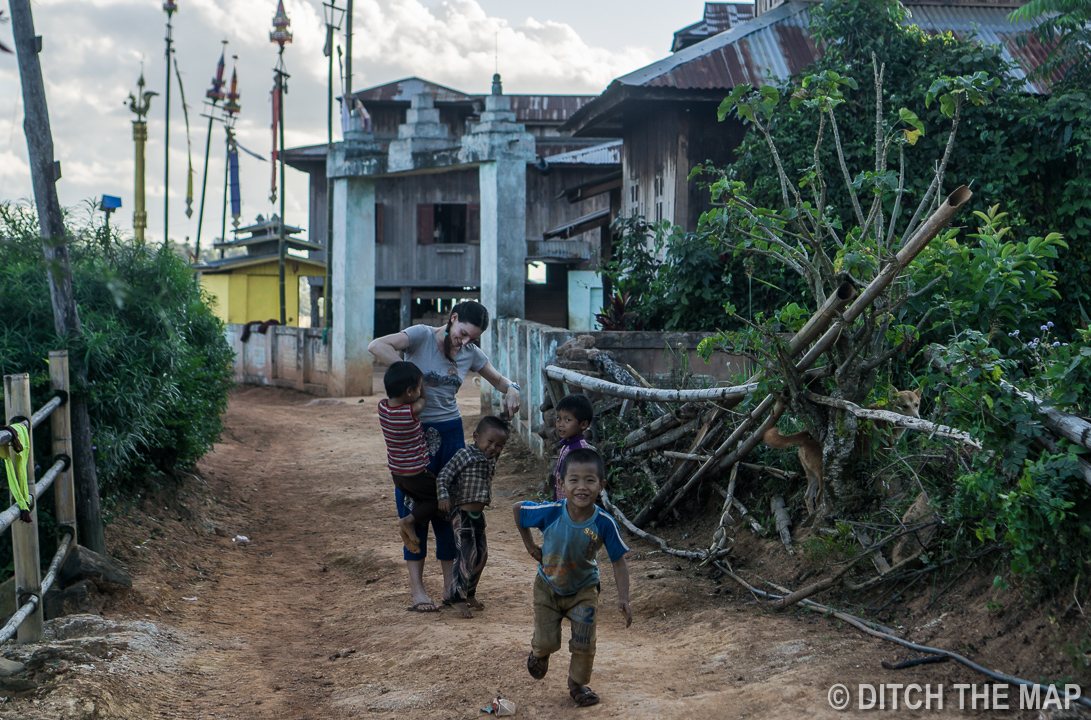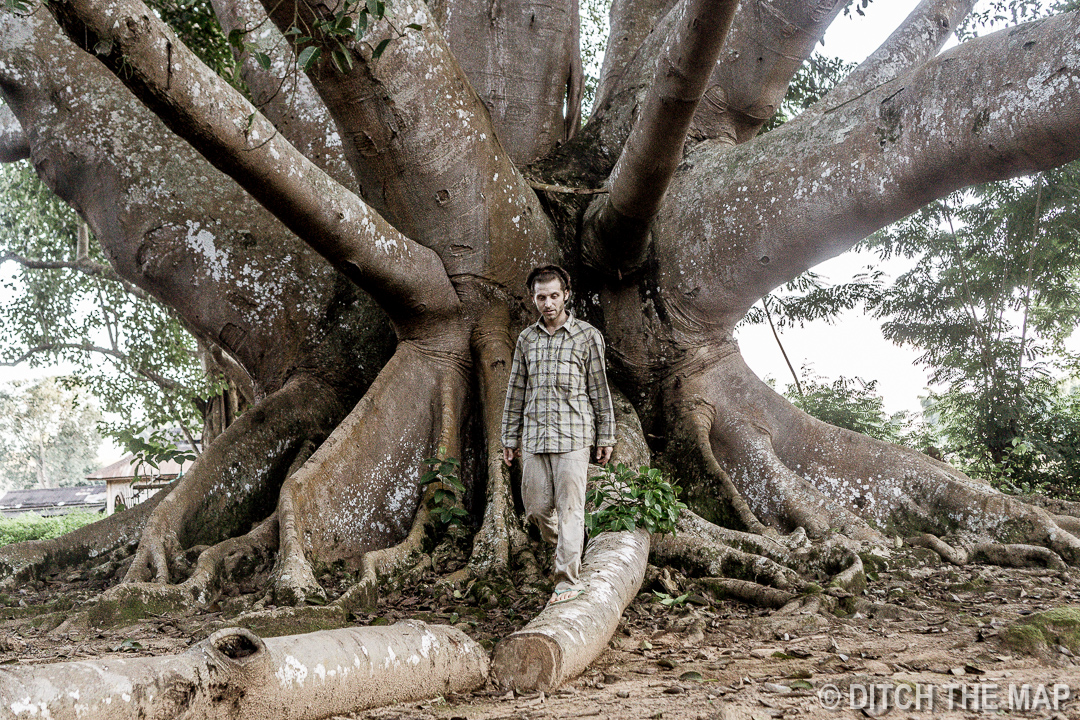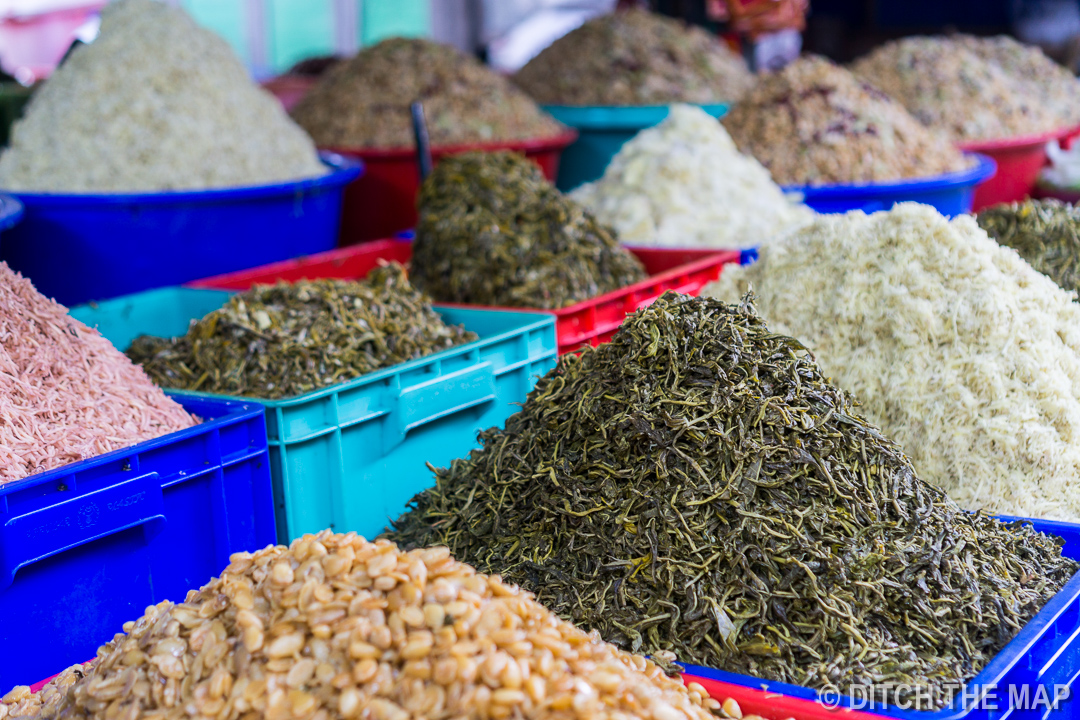6 Days in Pyin Oo Lwin & Hsipaw, Shan State, Myanmar
/October 18-22, 2016
A Day In Pyin Oo Lwin
We had planned to take a direct bus to Hsipaw, but the expat we met in Mandalay said the road would likely be jam-packed with people returning home from the full moon festival. We opted to take a shared taxi to Pyin Oo Lwin instead, a British colonial hill station, in order to kill some time. Throughout the non-airconditioned drive our taxi driver asked us at least 3 times which hotel we were staying at. Despite the language barrier everyone in the car was very friendly. The woman in front offered us some of her food—this type of hospitality is commonplace here in Myanmar.
We walked around the small town to get some exercise. We average anywhere from 10,000 to 20,000 steps on any given day, more when we go on hikes. I just read that a person who takes more than 8,000 steps a day is considered moderately active. I guess that even on our ‘lazy days’ we’re still extremely active. I am usually very careful about the foods I eat while at home but while traveling I eat so many more fried foods and carbohydrates. Sometimes a bag of chips and a carton of Oreos is the best option for a long train ride. Since we’re burning so many calories it doesn’t really matter. This will change when I return to a sedentary lifestyle back at home-- one of my largest fears for when I return.
While walking the small town we stopped in the central market, which was surprisingly massive. It is ‘the’ place to go if you need anything. At least 5 men smiled at me and gave me thumbs up…they really seem to love that I wear a lungi.
The bus that we had planned to take to Hsipaw was not running because of an over-turned truck blocking the only road. We had no choice but to take the train. By taking the train from Pyin Oo Lwin, instead of Mandalay, we shaved off 4 hours. Also the bus departed at 8 from Pyin Oo Lwin, while it left at 4am from Mandalay.
Taking a Train to Hsipaw
The train was small with only 4 carriages. The upper class was sold out so we were left with ‘ordinary’ class (wooden benches) which for a 7.5 hour ride cost us only 1,200 kyat ($1 USD) each. Sylvie had read horror stories about the train the evening before. One account told of seats in the upper class cabin crawling with bed bugs, filthy floors, and a ride that jostled a person from side to side. As we stepped onto the carriage we had to leap over a large pile of hay, which was blocking the central alley. There was what seemed to be mulch spread across the uneven rickety wooden floor. People were crammed into seats and sat Indian style since large sacks of produce and luggage took up all the legroom. At one point I had to actually leap over an infant sprawled out in in the alleyway. The 4 foriengers on the train all locked eyes; we knew it was going to be an interesting ride.
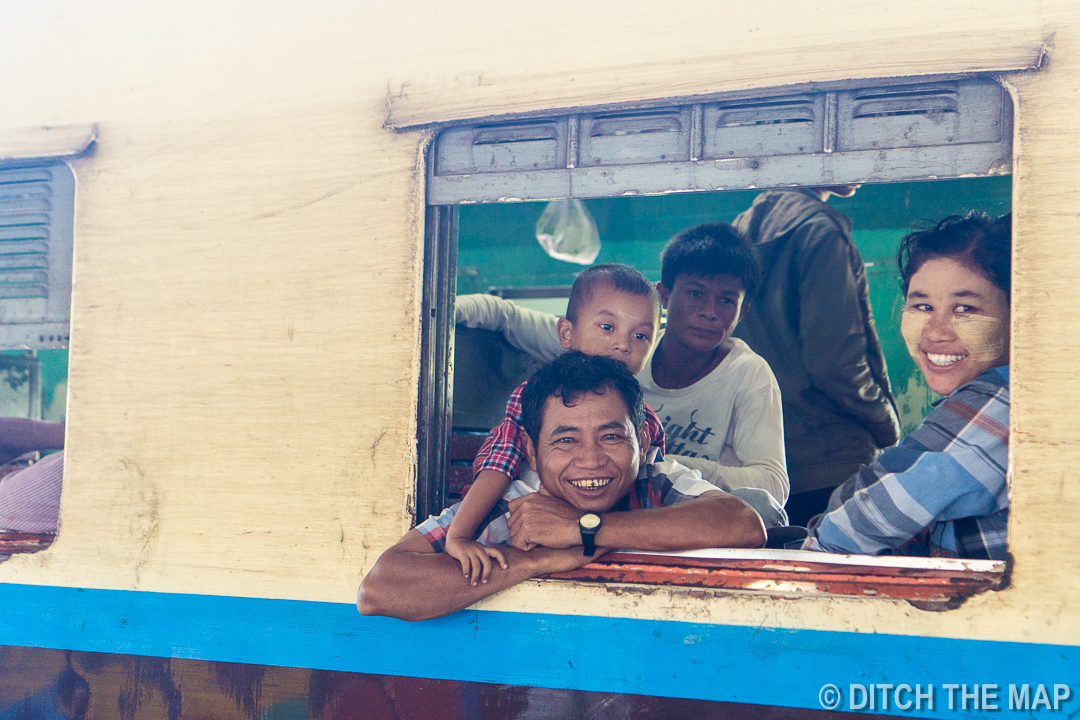
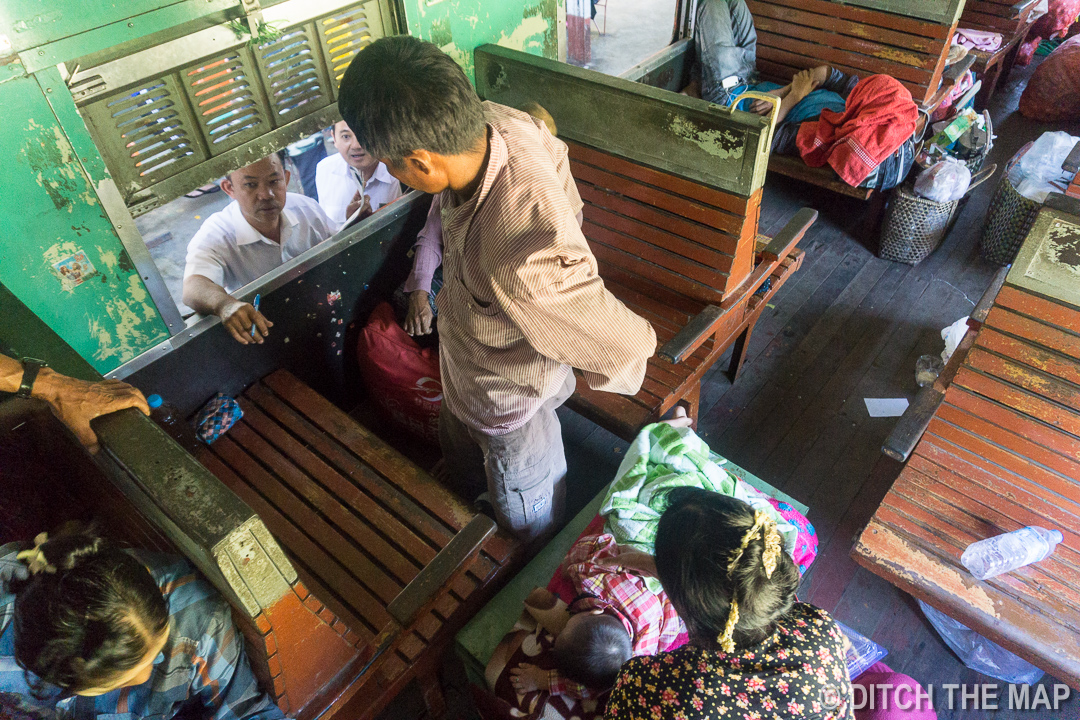
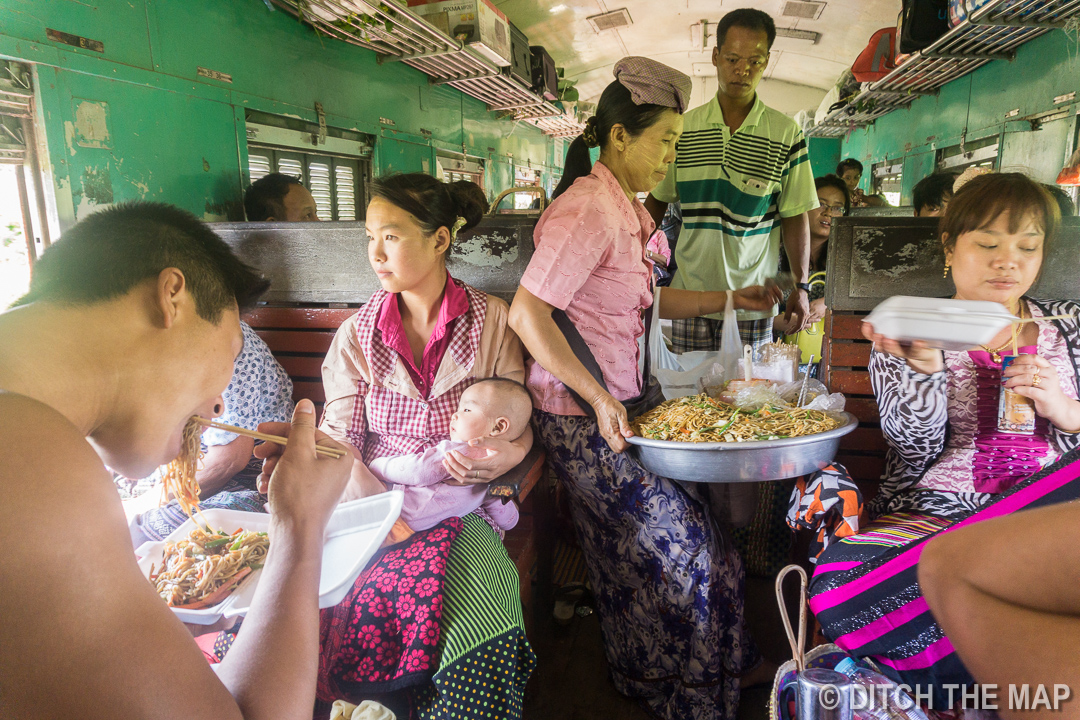


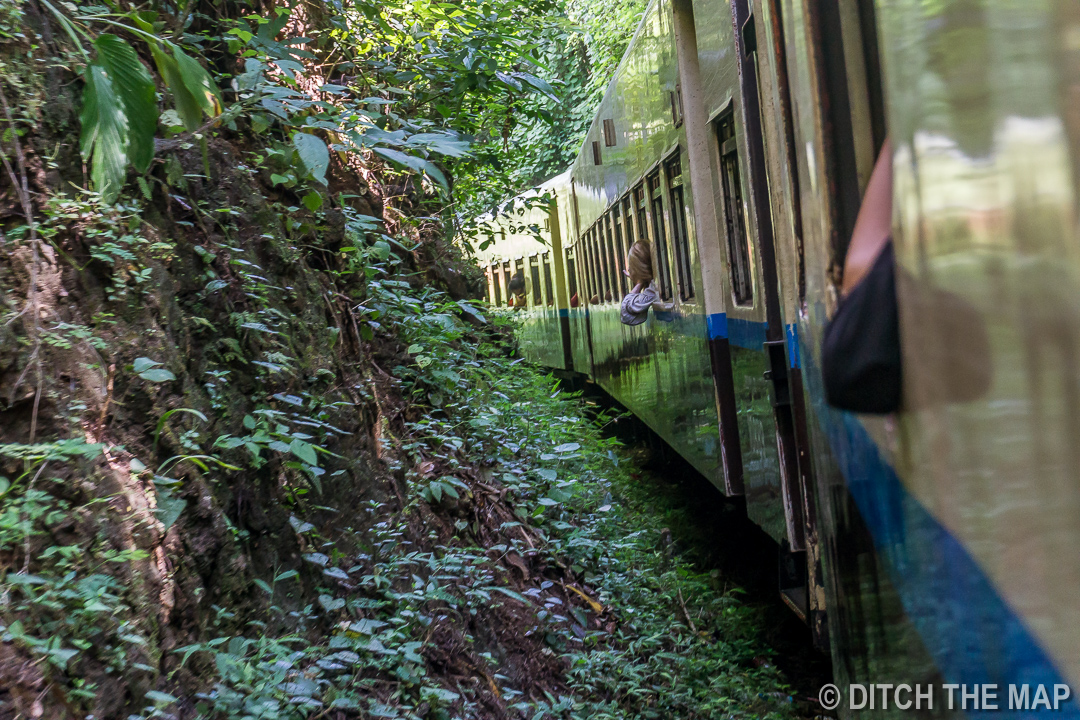
The train’s back and forth sway made it impossible to sleep for more than a few minutes. The entire journey felt more like a 100-year-old wooden rollercoaster ride than a train. We bought some sour mango and fried noodles aboard the train and tried to pass the time. We passed over the Gokteik Viaduct around 11:30am. The viaduct was opened in 1900 and was built by the USA and commissioned by the British. When it was built it was the 2nd tallest and remains Myanmar’s largest to this day. Although it’s illegal to take pictures of it, due to security reasons, no one seemed to care.
Train from Mandalay to Hsipaw, Myanmar (click to view)

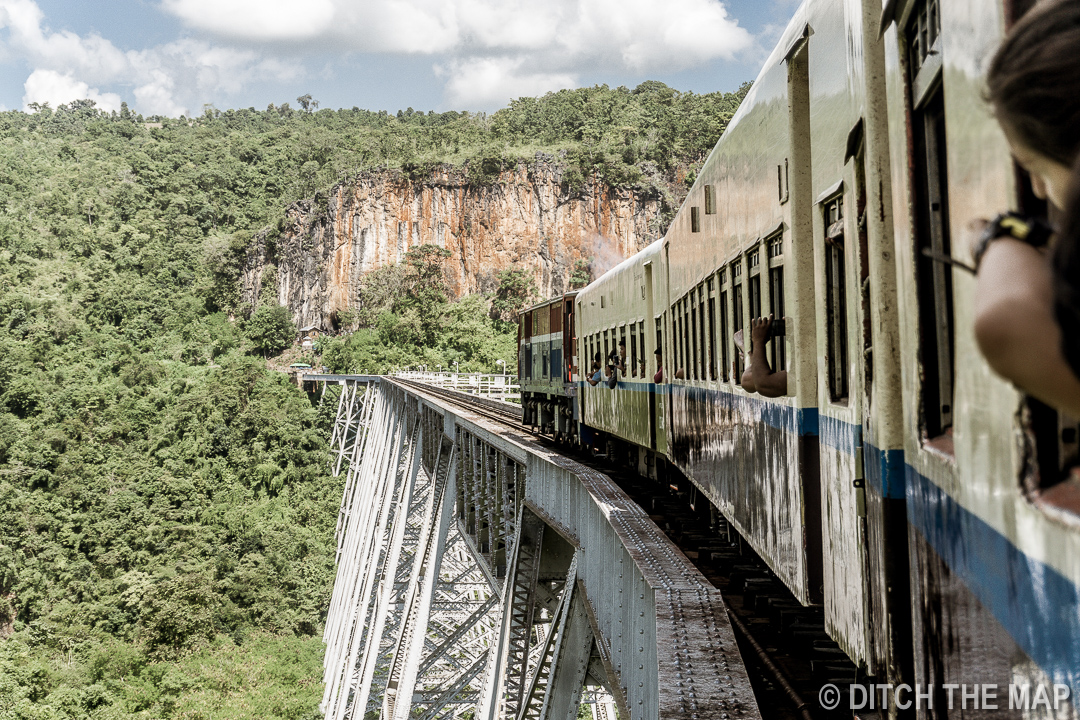

The Town of Hsipaw
We walked around town at night and ate at one of the top rated restaurants in the city. The place had no walls, no fans, and a very simple menu. We couldn’t believe how basic the town was. We walked the streets towards what seemed to be a carnival. There were a few rides and vendors selling mostly hair products and cheap plastic toys. The street food looked much more ‘rustic’ than what we had seen elsewhere—there were large vats of red chunky liquid that I didn’t feel enticed to try. However Sylvie was eager to sample the pink cotton candy and a fried bun filled with sugar. The next night we tried the ‘cow pie’, which is black/deep purple rice flour that is steamed and topped with crushed peanuts and sugar.
Kahtain Parade Festival in Hsipaw, Myanmar (click to view)
Kahtain Parade Festival in Hsipaw, Myanmar (click to view)
After signing up for a trek and booking yet another night bus to Yangon we walked down the main street of Hsipaw where the Kahtain Parade Festival was going on. This marks the third festival we have taken part in during our short stay here in Myanmar. They really love their festivals here. The Kahtain Parade Festival is an annual celebration involving all the local Shan villages. Each village collects all the donations towards their monastery and decorates a pickup truck using these donations. Most of the donations were cash but there were also sheets, blankets, and other various wares. Young men dress up and paint their faces (think angsty teenager/punk rocker) and dance around with each other while following closely behind their village’s truck.
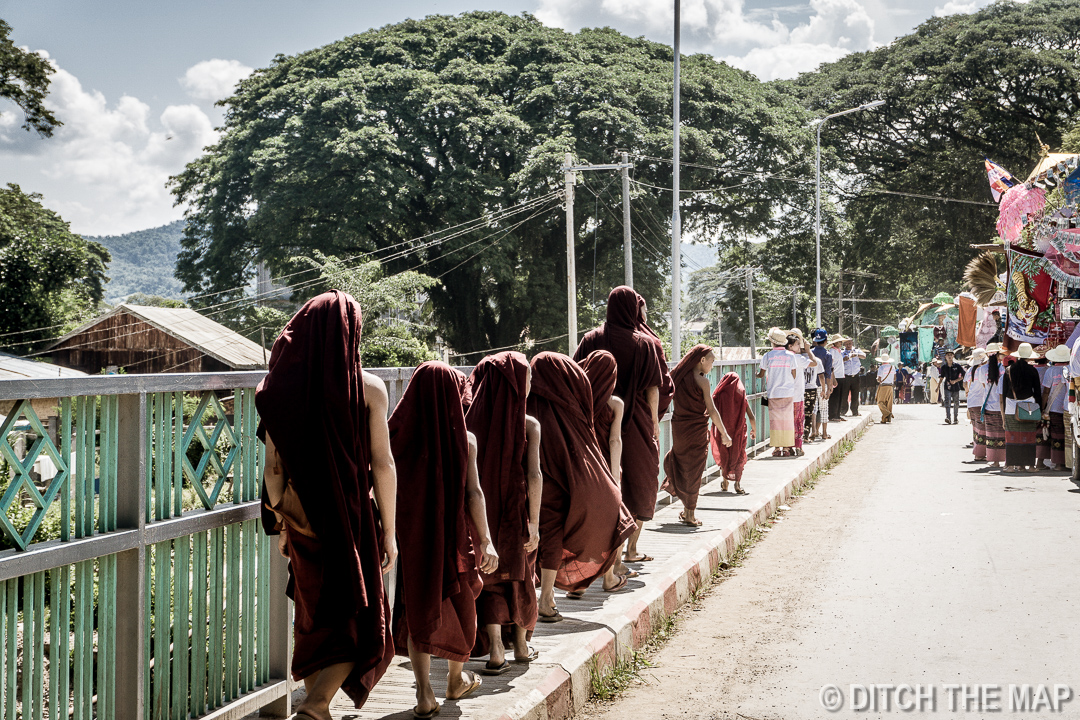
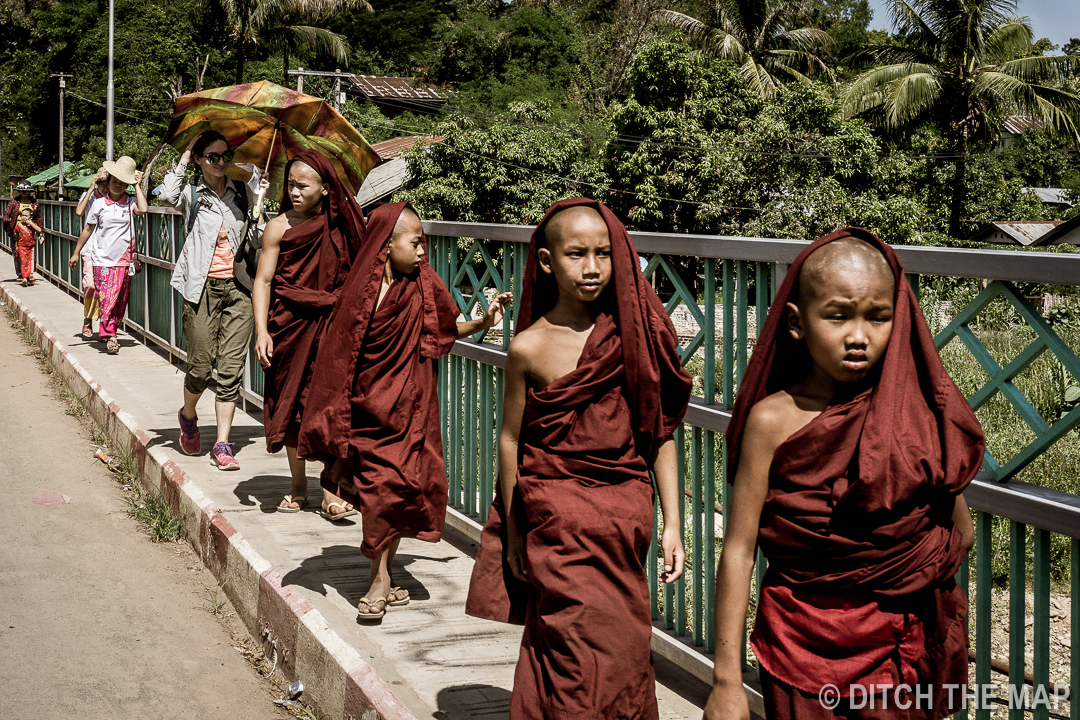
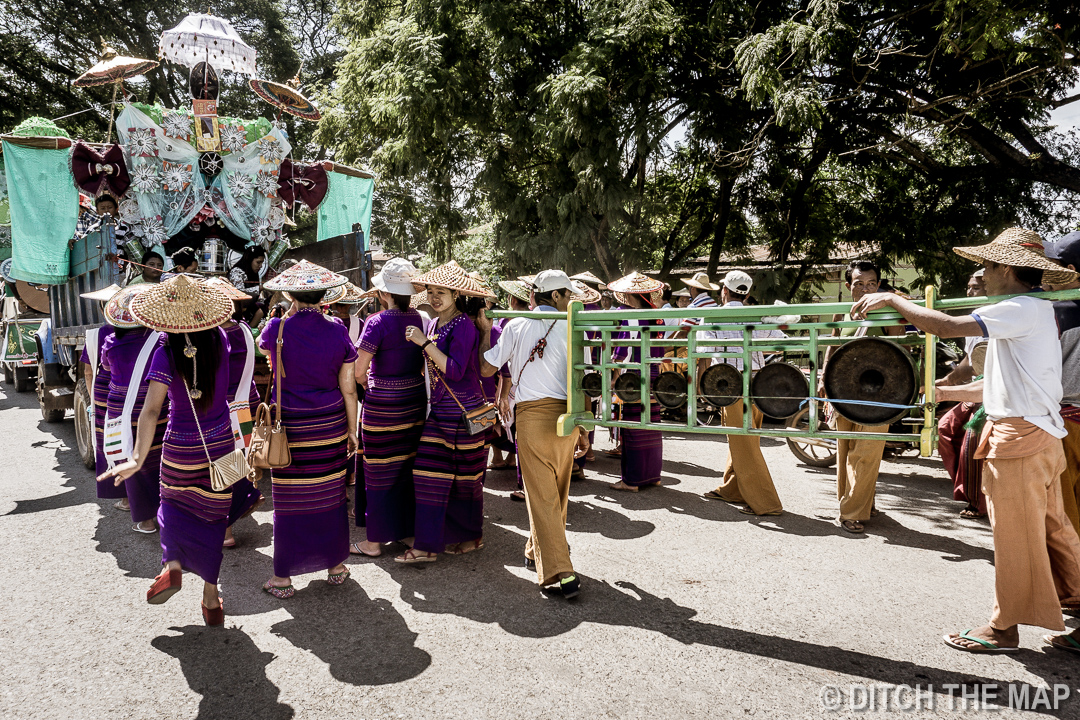
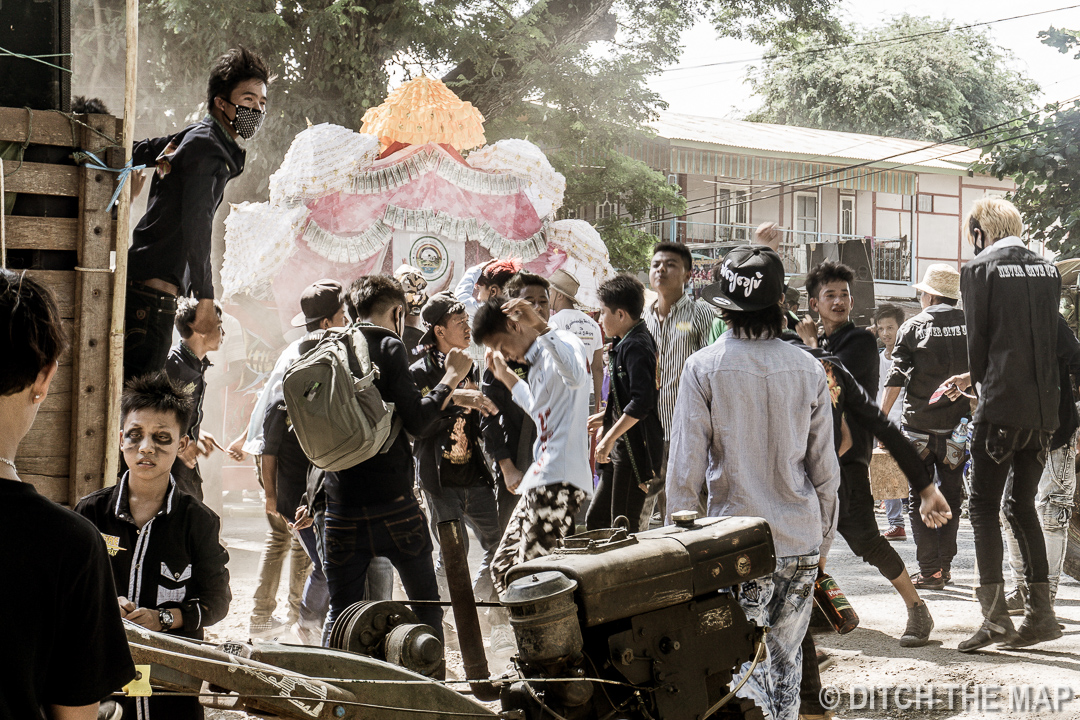

The trucks were equipped with a dozen large speakers playing music so loud that it was physically uncomfortable for us to watch for too long. In fact, they were putting out so much wattage that each truck had a separate car-mounted gas generator running just to supply enough power for the speakers. There were hundreds of onlookers watching the parade down the streets. Boys played with toy, yet very realistic, plastic guns. It’s quite a contradiction to watch a handful of young Buddhist monks playing with shotguns and pistols. Boys will be boys I suppose. The procession went on all night and the sound of firecrackers could still be heard when we went to sleep sometime after midnight.
3-Day Trek to Remote Shan Villages
At the start of our hike many people were passing us on motorbike—rural villagers riding back home after the celebration in Hsipaw. We stopped several times at small rural huts to re-up on water and other refreshments. After 16kms of uphill trekking in what seemed to be the moist butt crack of the devil himself (very hot and humid) we finally arrived in the Palaung Shan village of Pan Kam.

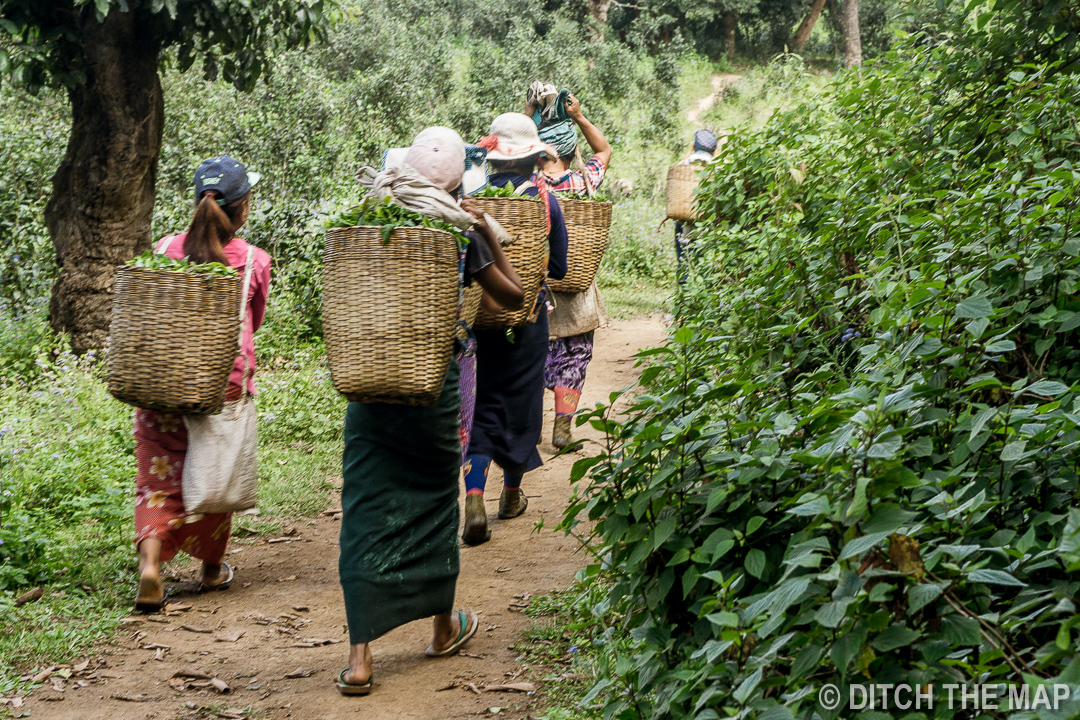
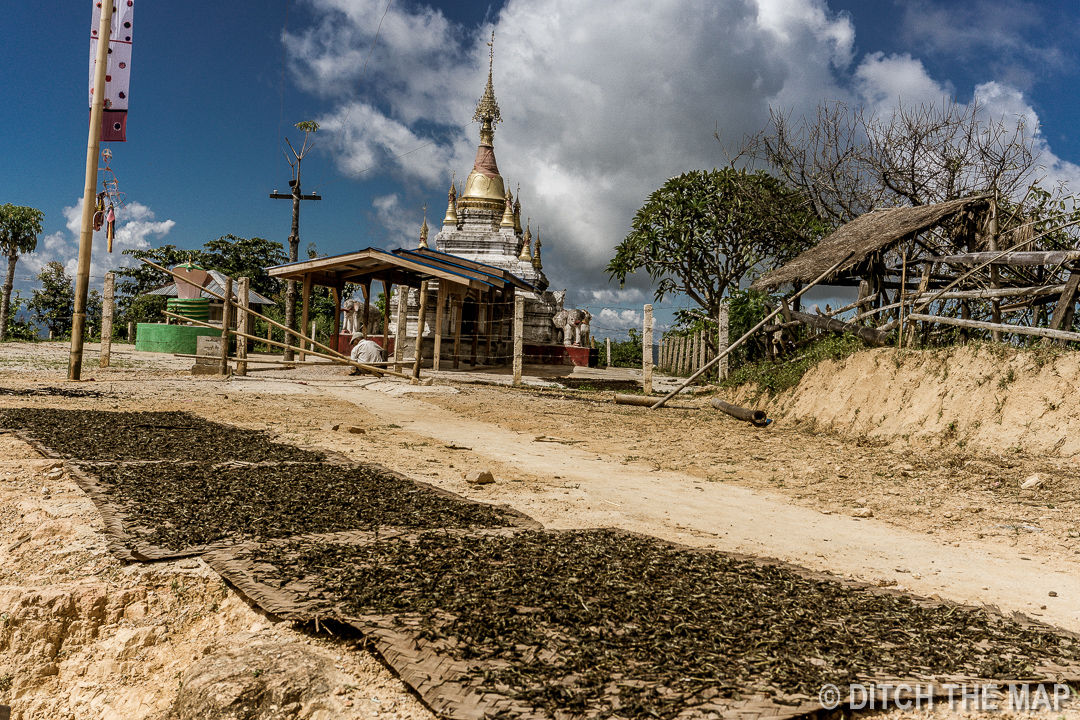
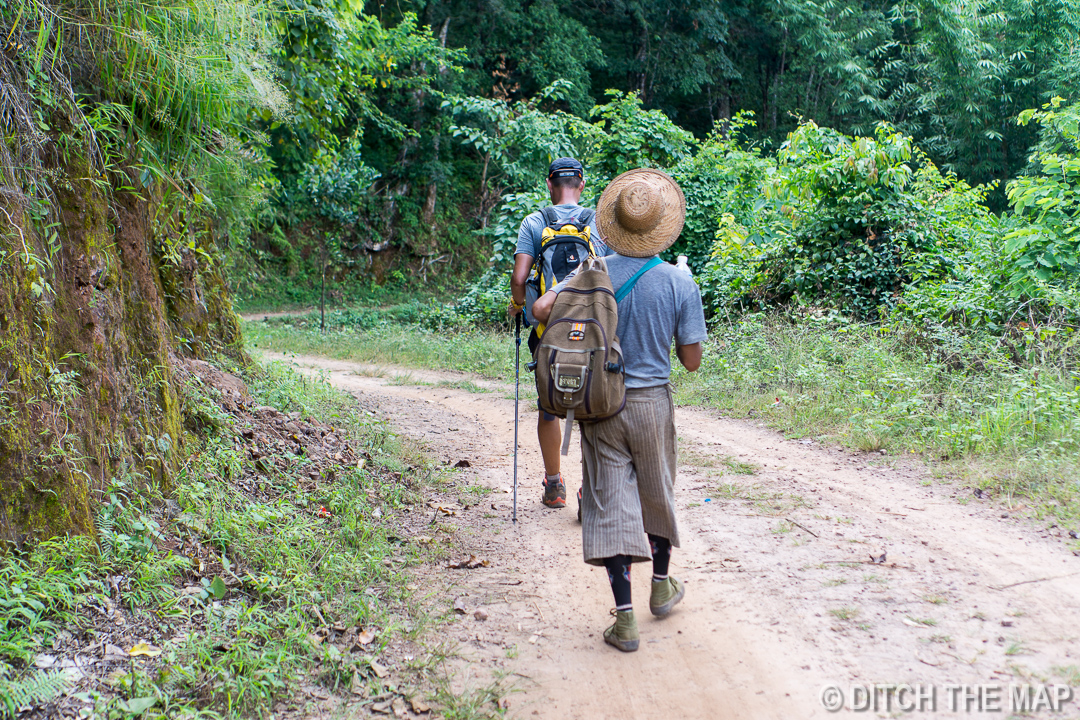
We ate a vegetarian meal, since meat is way too expensive to be eaten, and devoured way too much of it. Our rice was served alongside mustard greens, cauliflower, cabbage salad, fried rice crisps, and a tomato chili salsa. A brief rest and then we went for an hour walk through the village. We saw how tea is processed. Up till 2 years ago the tea was prepared over a clay fire—now a primitive boiler system is used. We learned how married women must shave their heads such that men from other villages know who is unavailable. However this practice is not common anymore.
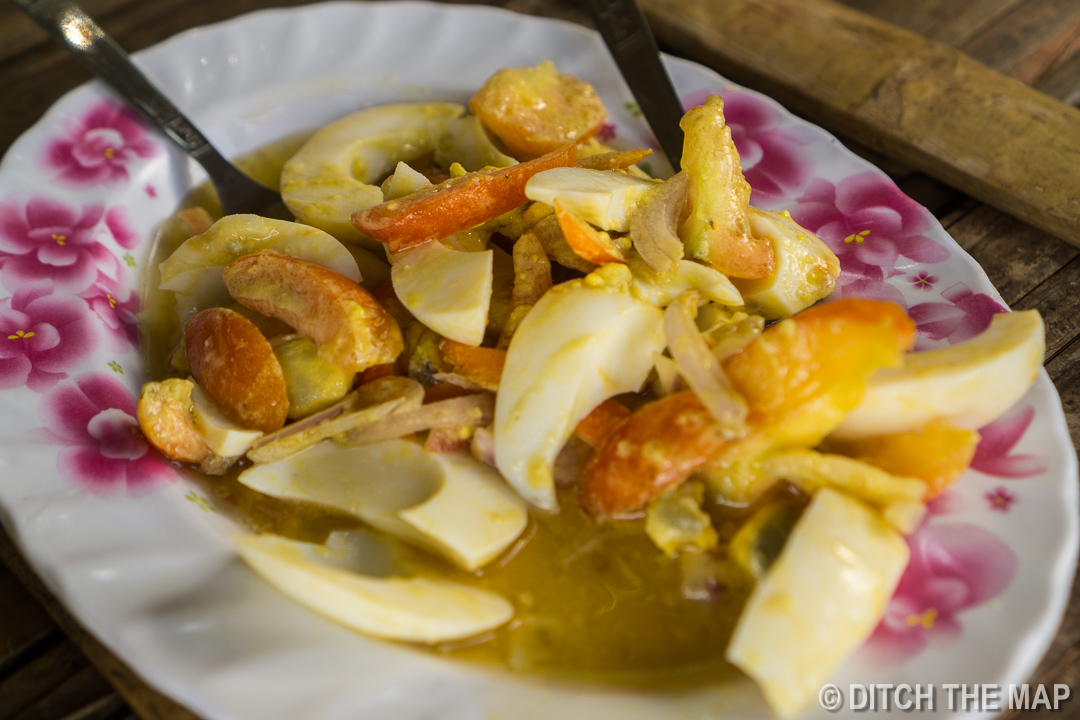

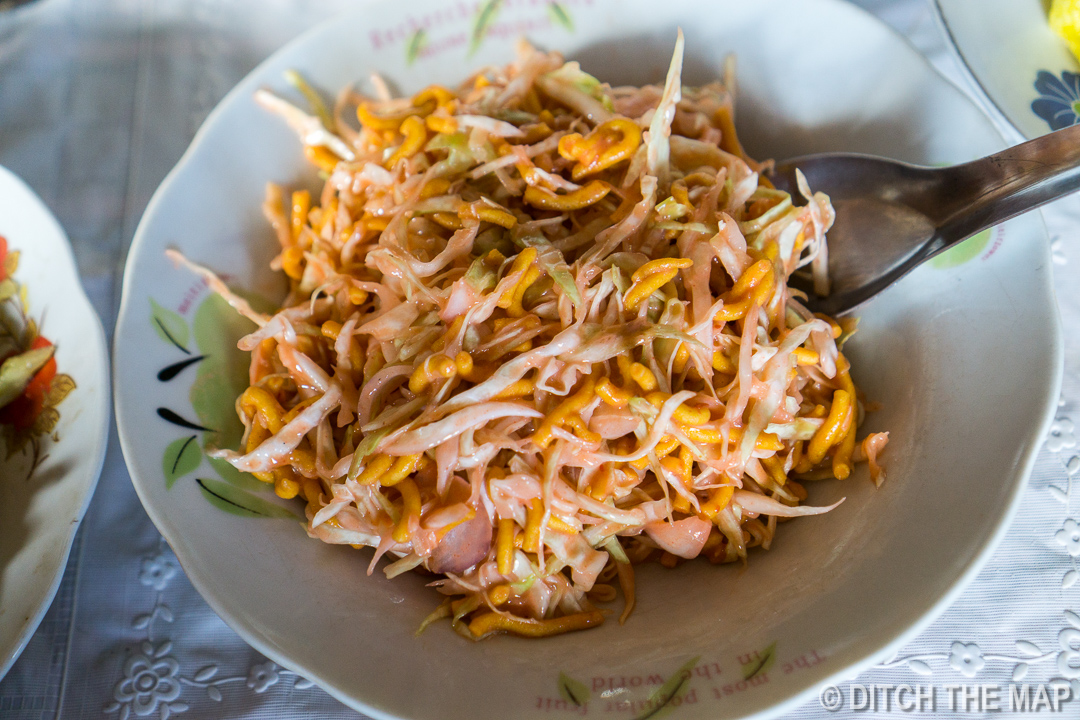
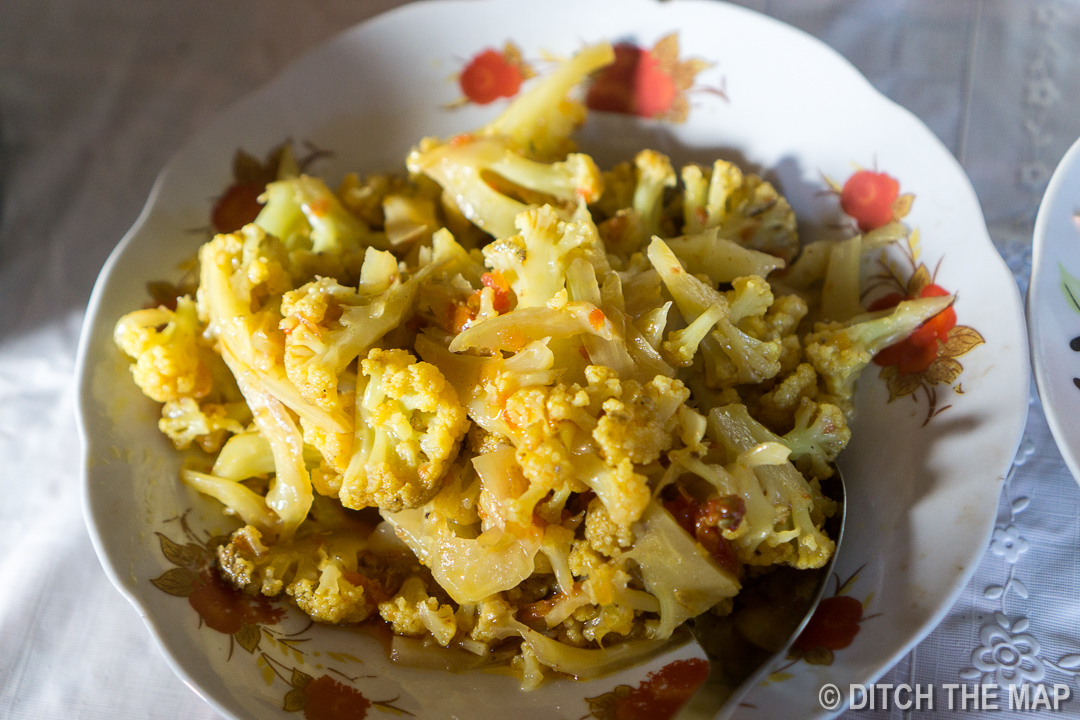
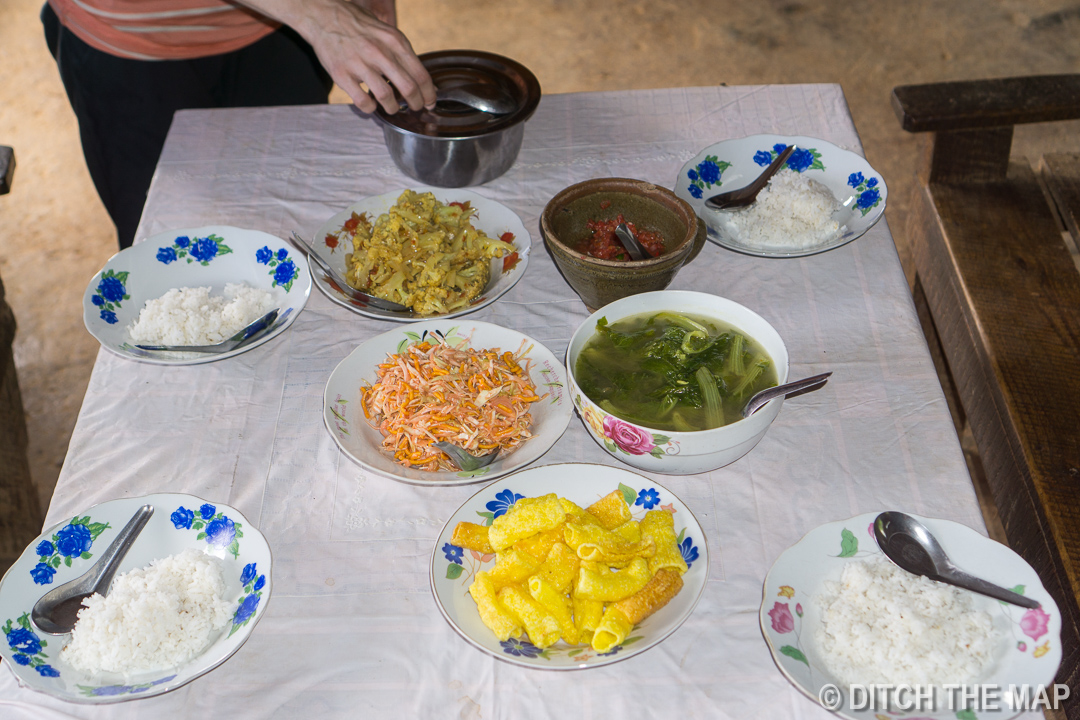
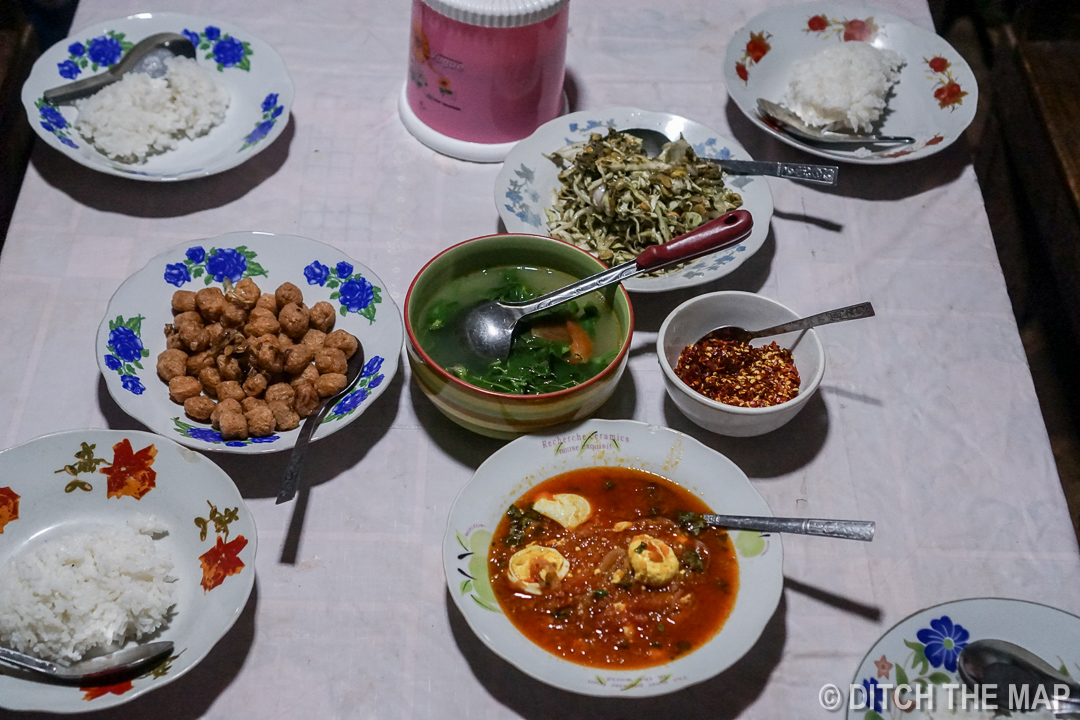


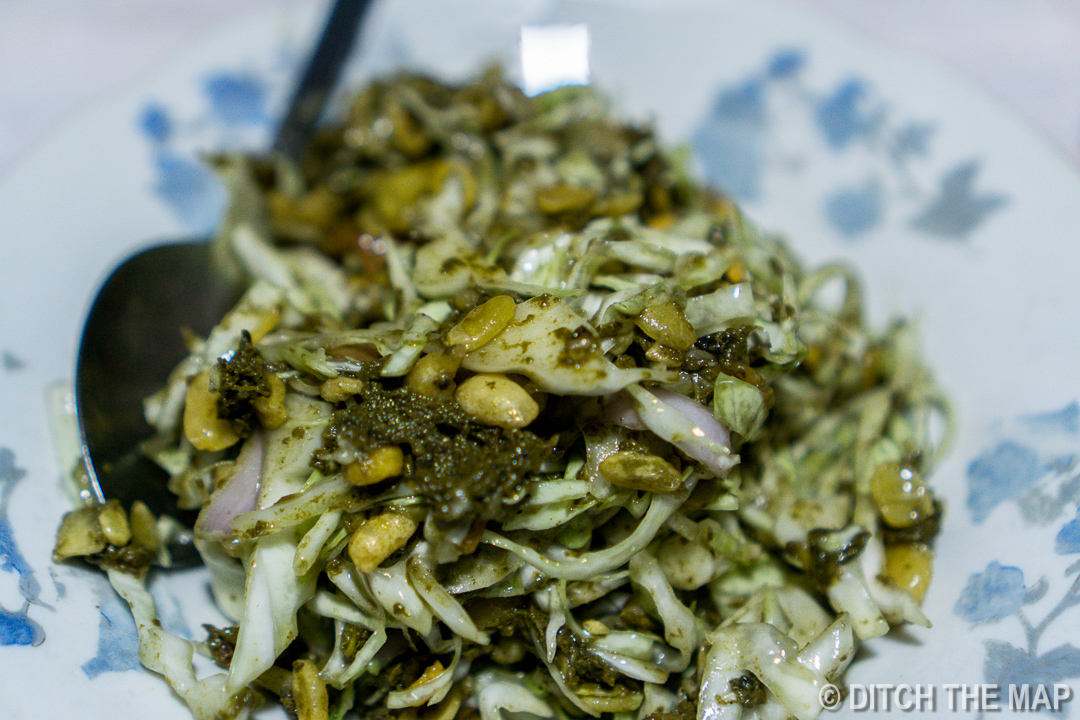
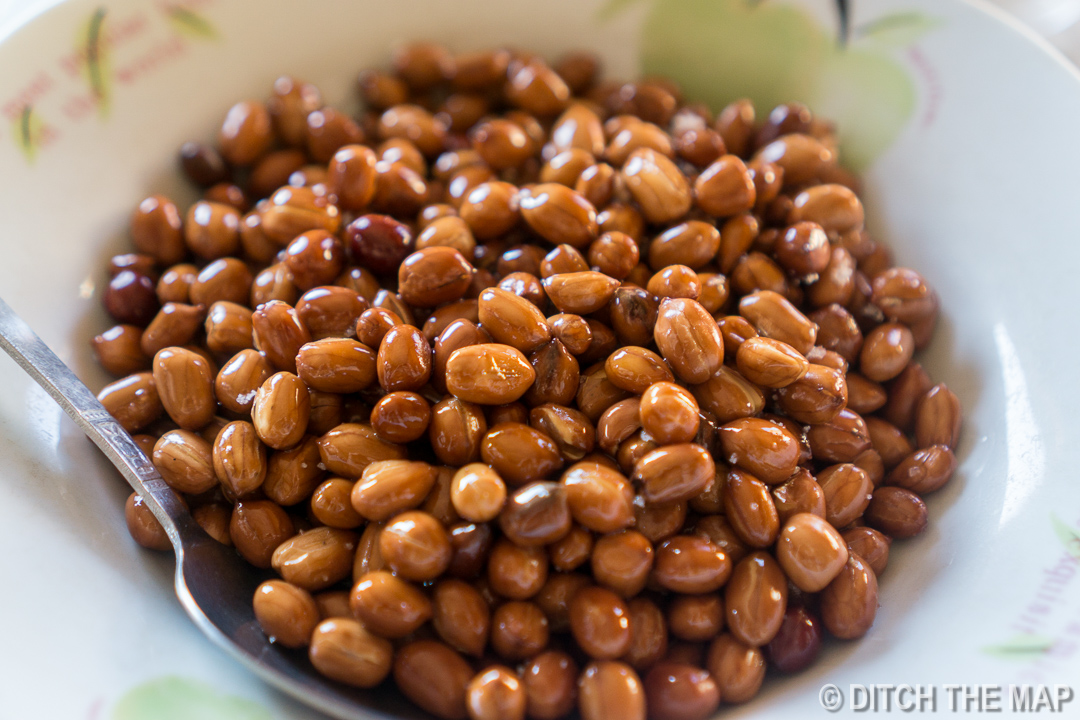
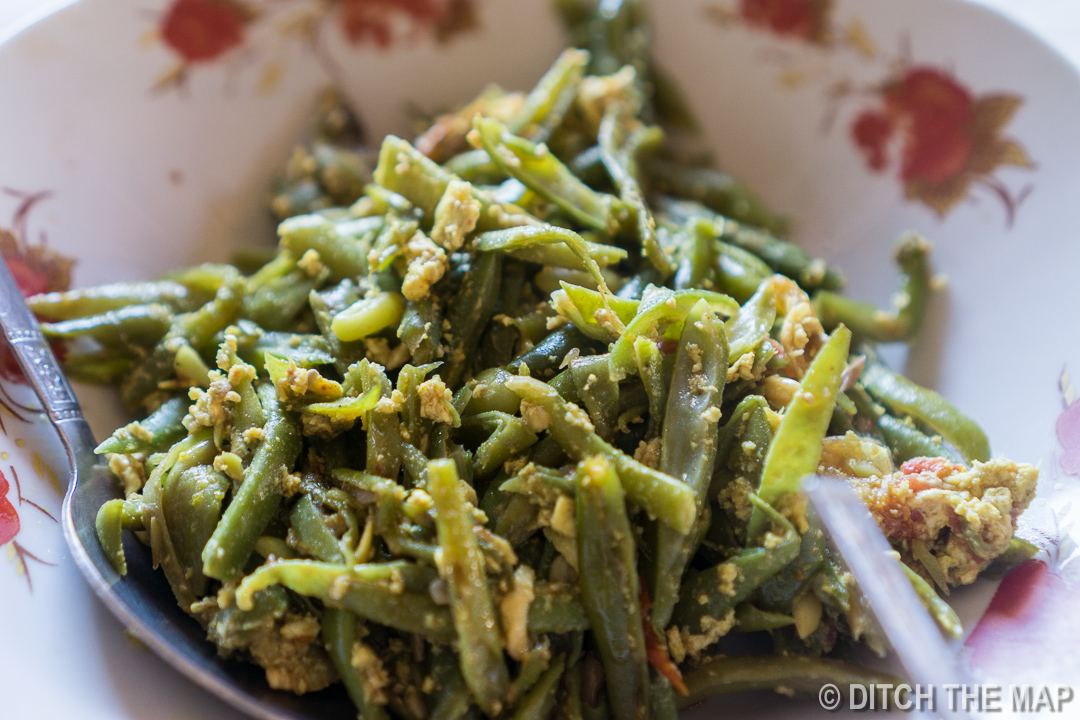
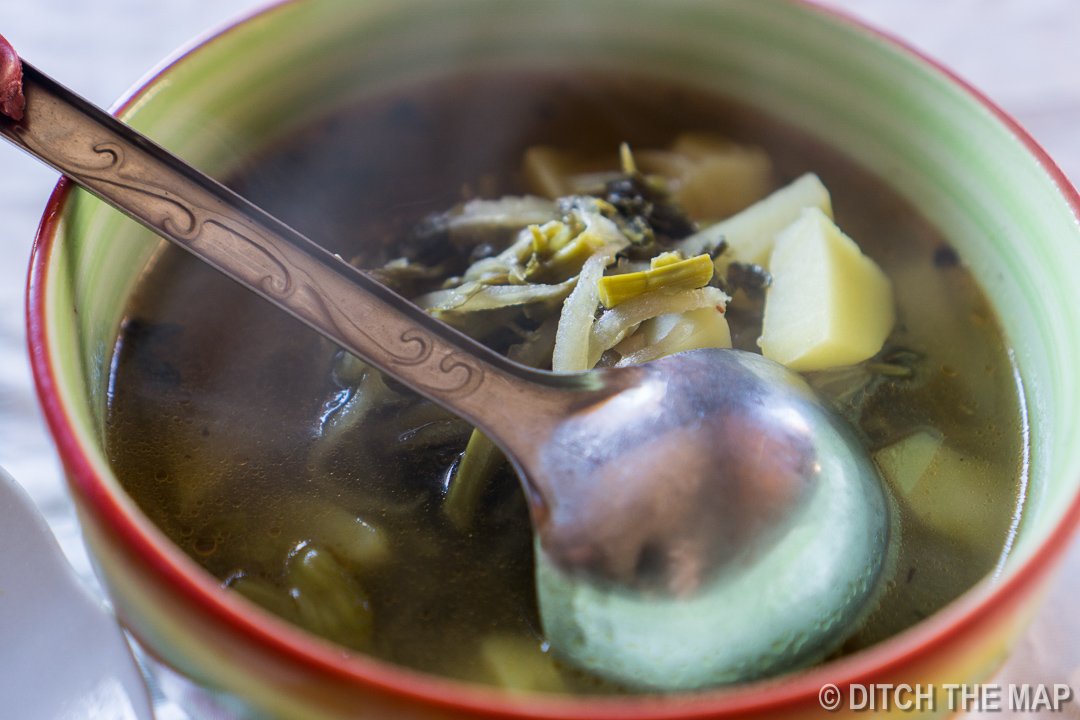

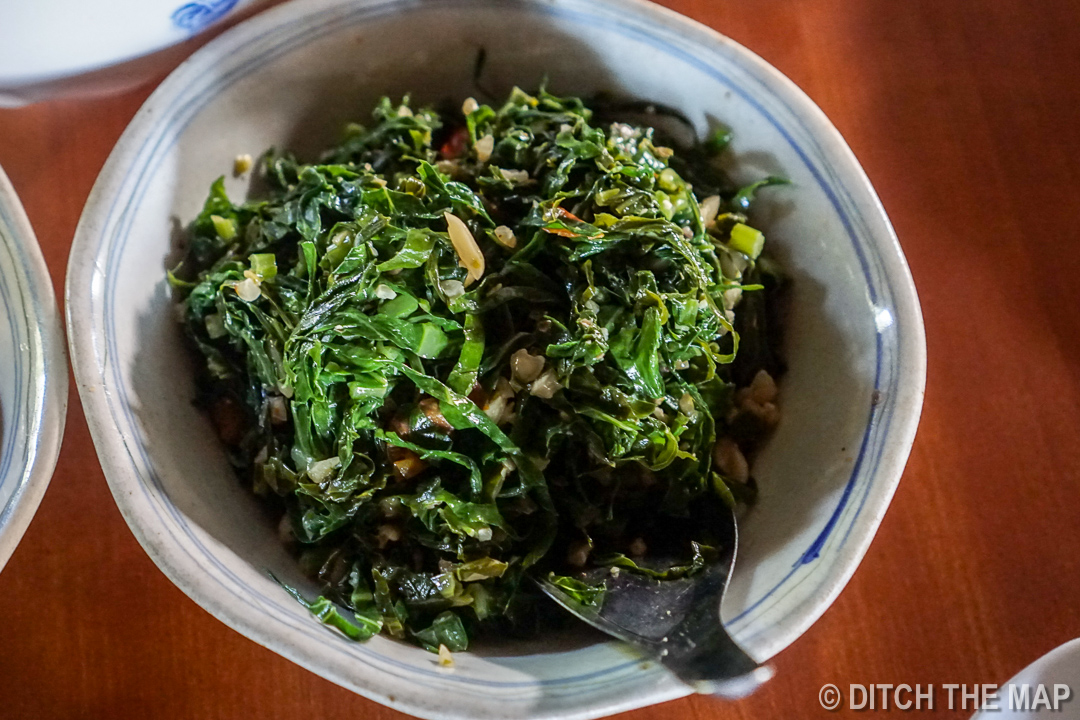
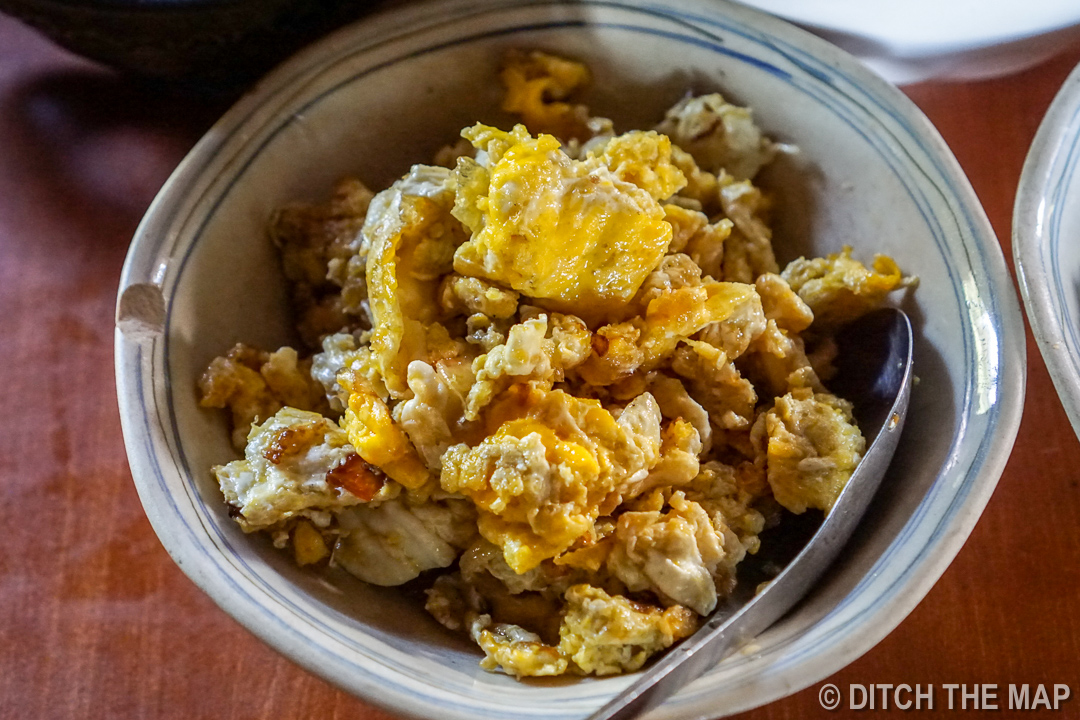
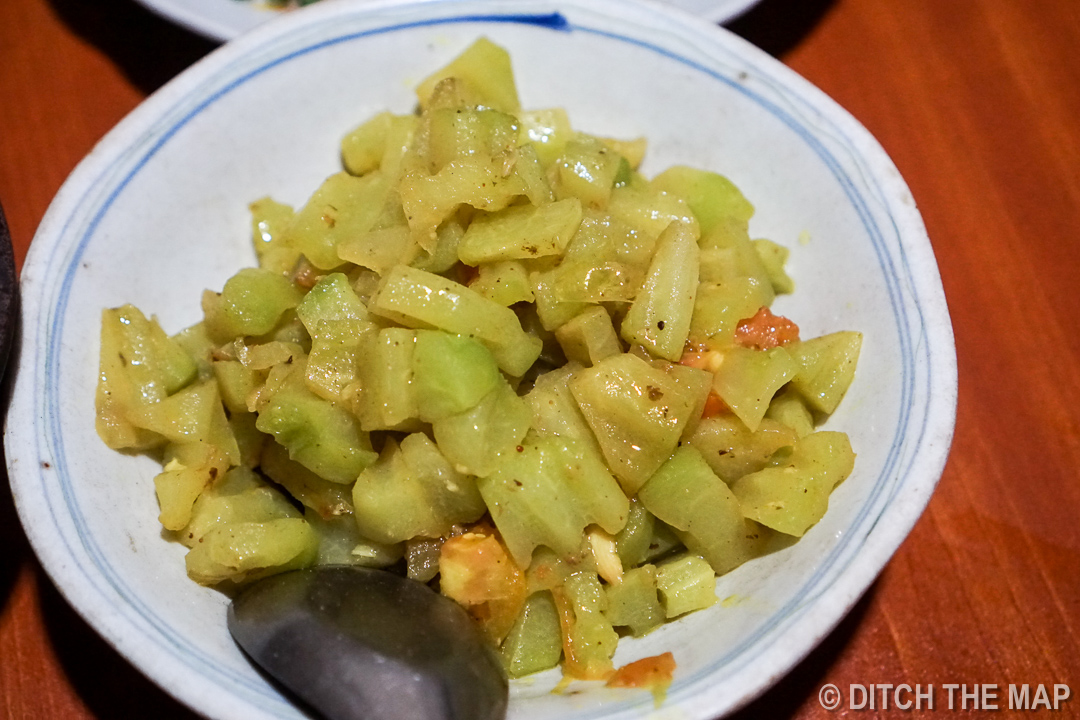
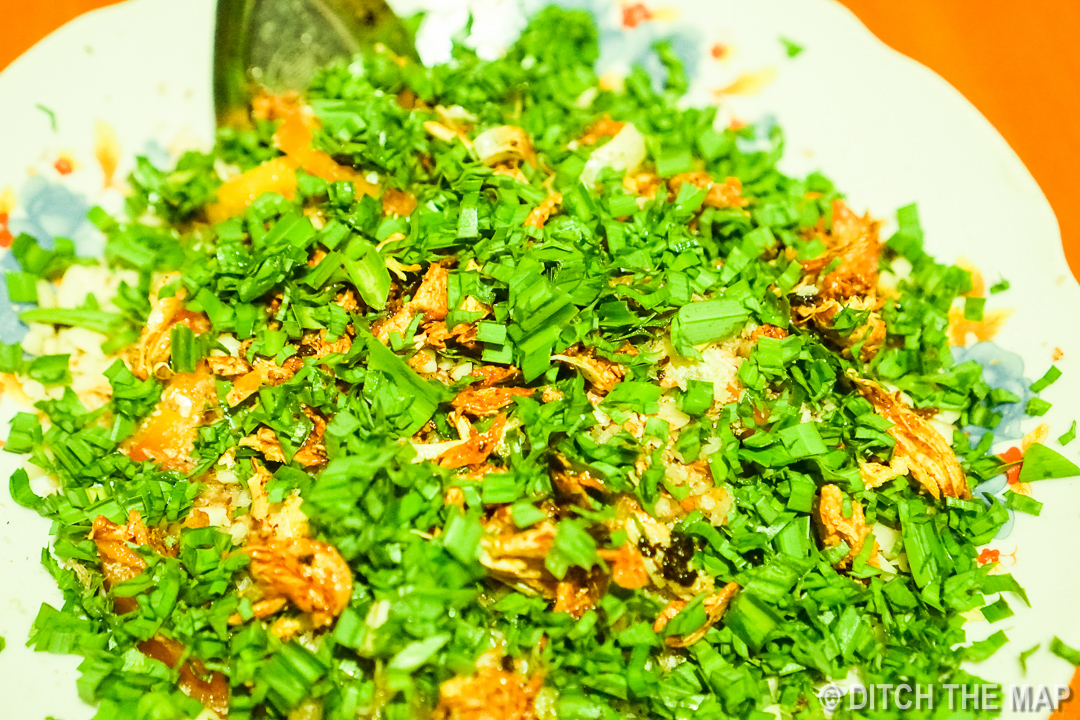

Children Playing in Hsipaw Pan Kam, Myanmar (click to view)
Children Painting in Hsipaw Man Loung, Myanmar (click to view)
There were dozens of children playing in the dirt roads. Children start primary school at the age of 5 and finish when they are 10. Most kids do not continue school, as it’s expensive, and help their parents on the farms. The parents that can afford to send their children to school send them to middle school in the main town (Hsipaw). We saw most of the young boys playing a ‘resourceful’ game of toss the flip-flop at the target. All children greeted us with smiles and giggles as they squeaked out “key-um sah”, which means hello.

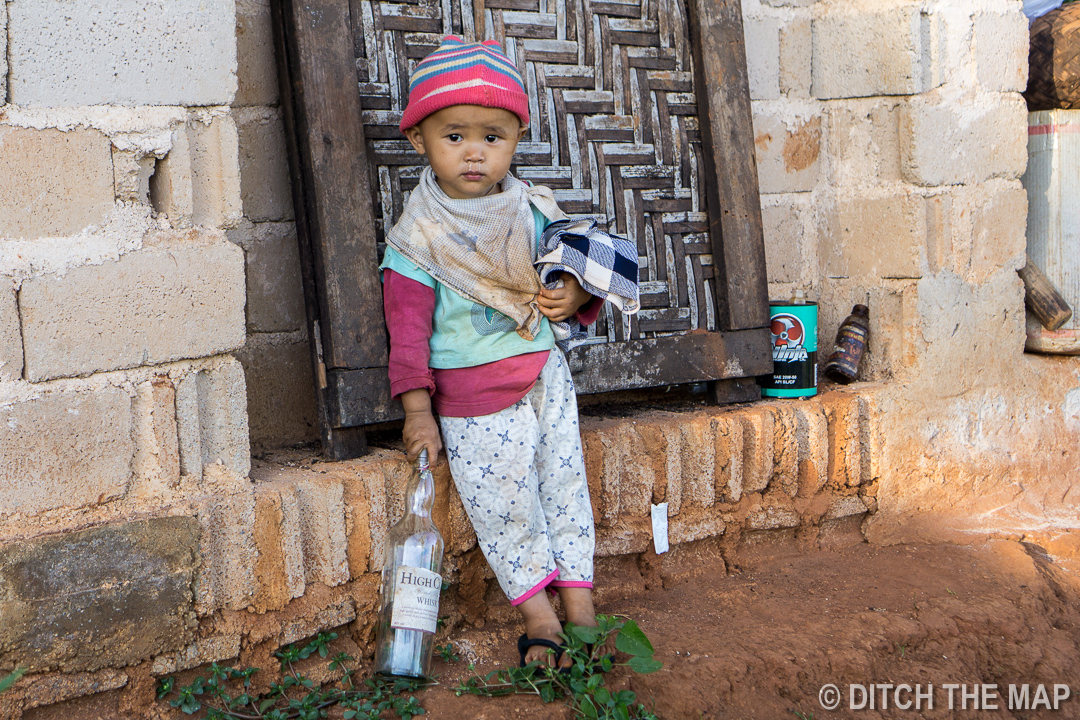
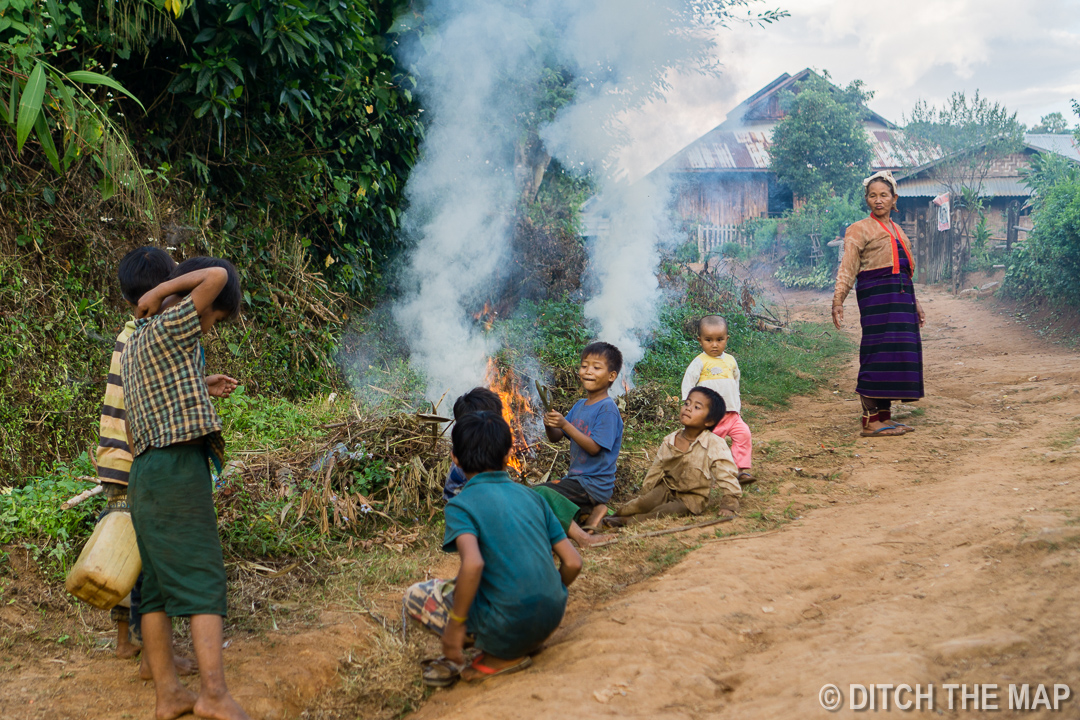


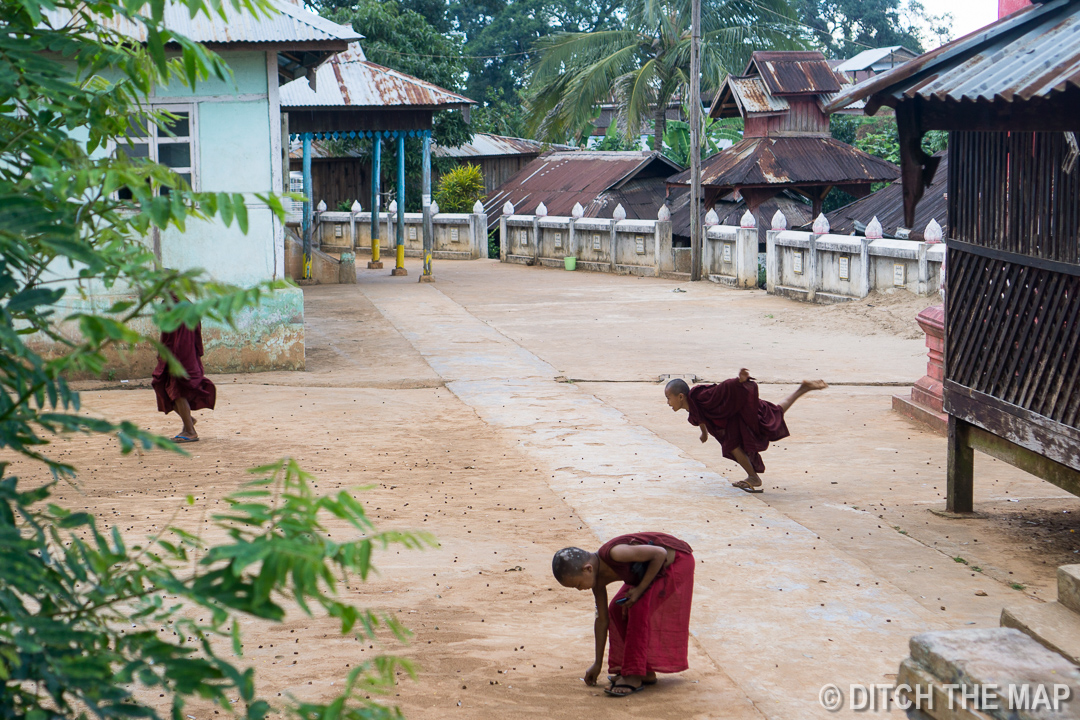
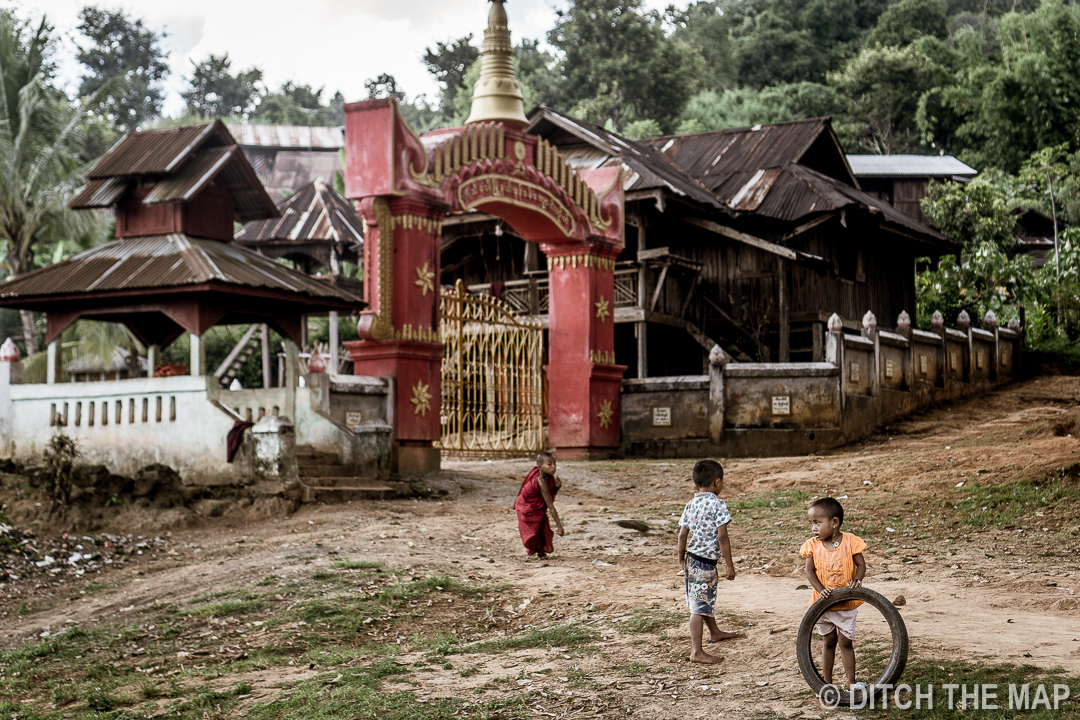
During our walk our guide informed us how over the last several years much of the forest has been removed and replaced with cornfields. Similarly he said that many nearby tea and sugar cane fields have also been converted to cornfields. He described how corn is much easier to tend. We also walked by many fields of sticky and normal rice during our arduous day of hiking. Not until recently did men start using motorcycles and trucks for help in the field. It seems that over the last several years the Shan State has been able to use technology to increase their agricultural yield.
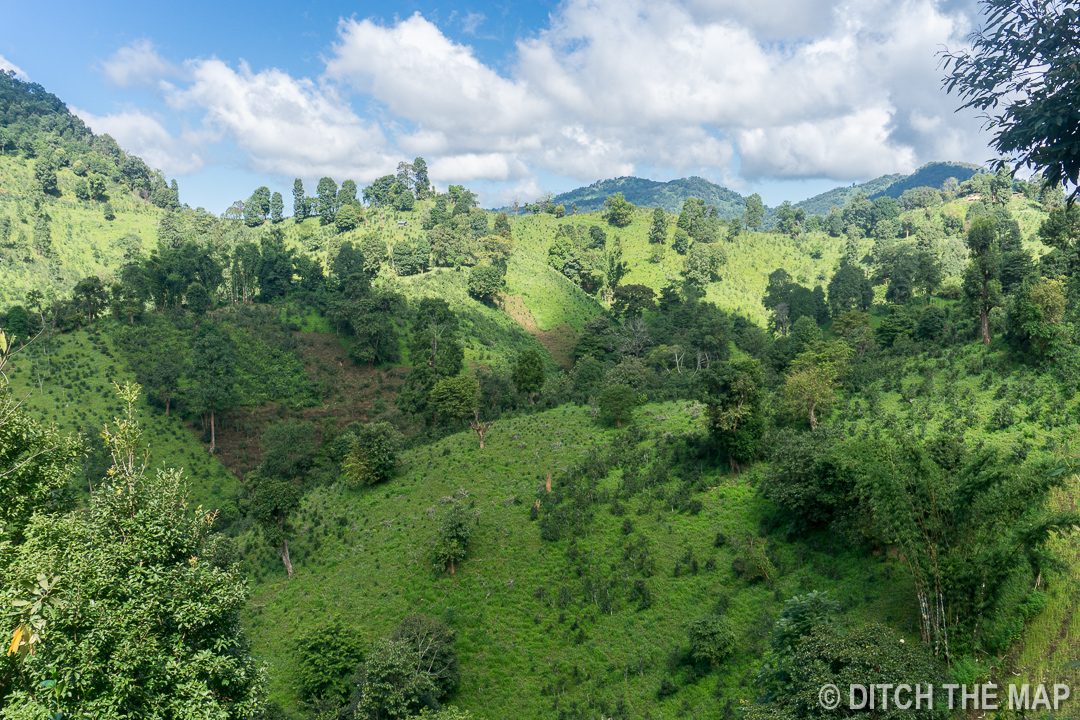

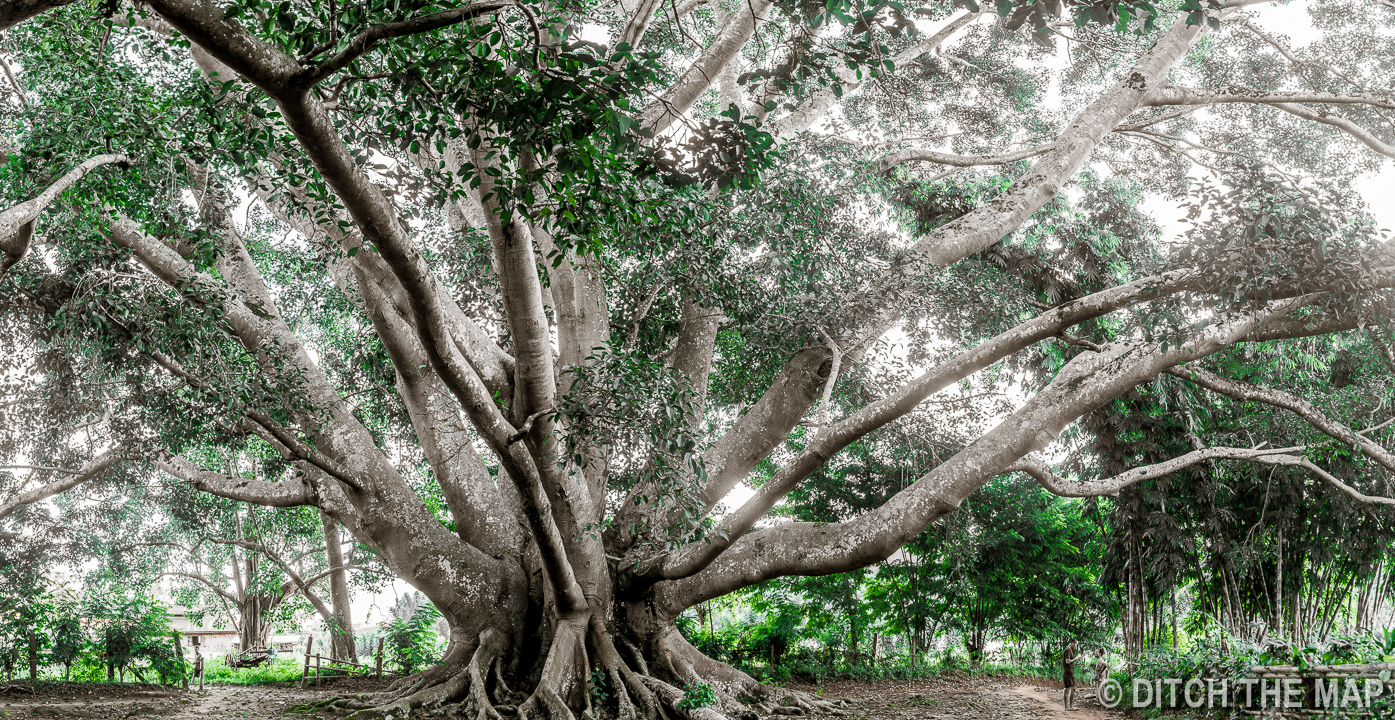
140 families live in the village and our guide says he knows all of them. As we walked he pointed out traditional houses. There are some that are home to multiple families. He pointed out eucalyptus trees and told us that the government provided each family one tree. All the houses use solar power, which means minimal lights once it gets dark.
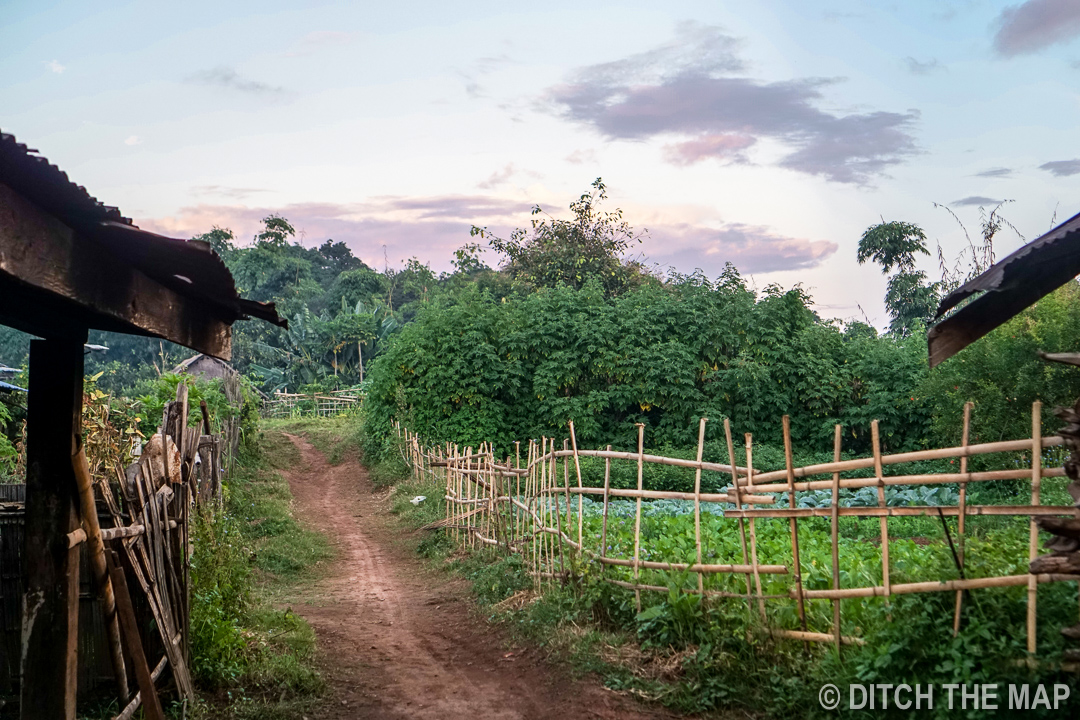
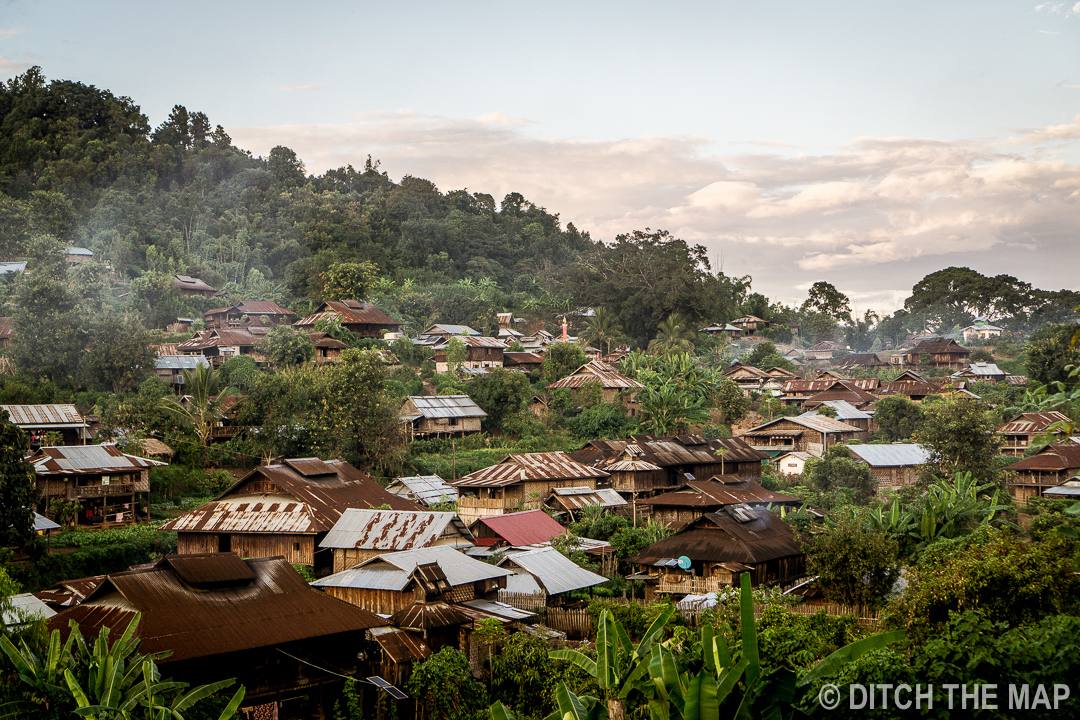

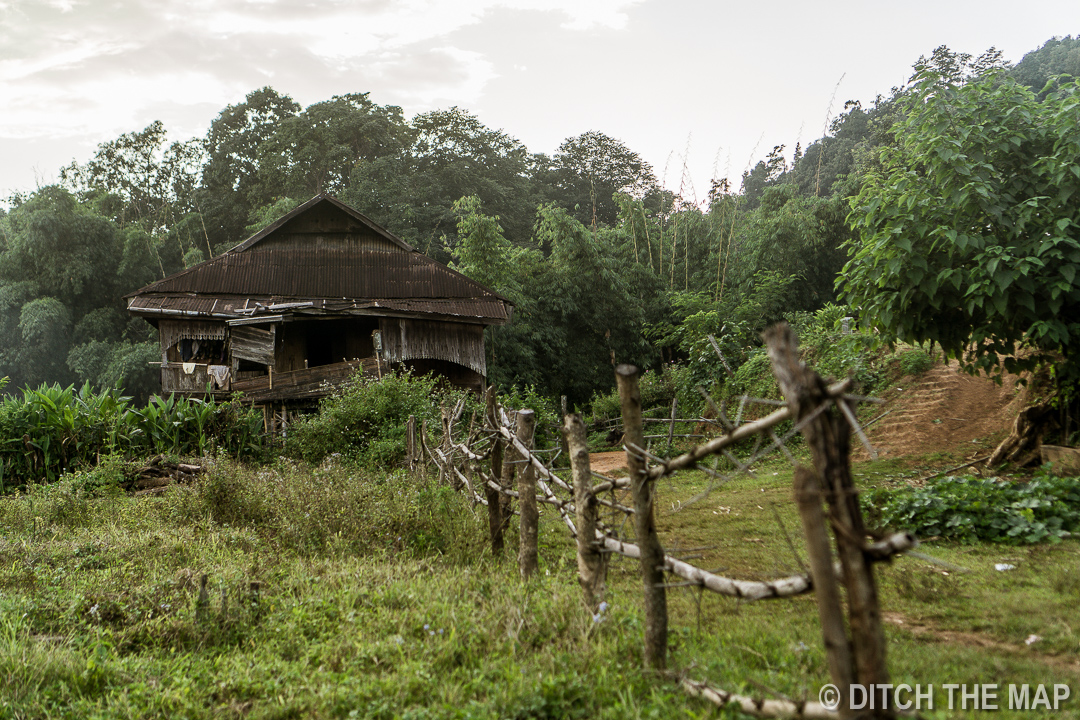
3-Legged Horse in Hsipaw Man Loung, Myanmar (click to view)
Puppies Playing in Hsipaw Man Loung, Myanmar (click to view)
The second day we walked 15km to another Palaung village named Man Loung. We enjoyed another delightful vegetarian Shan meal. Afterwards I showered using a tub of water that was collected from a spring outside of town. I decided to wash my hair, but felt guilty afterwards because of how much water I ended up using to get all the soap out. Sylvie and I both enjoyed the experience of bathing (still wearing clothing) while squatting on the dirt road and pouring water over our limbs. The sleeping arrangements have been very nice—a couple inches of padding on the ground of the upstairs. At night the hosts rig up mosquito nets for us. The guide, Bobby, and the two of us share one open room. Bobby is a 49-year-old Korean who has been traveling for 6 months and additional 2+ years to go. He retired a couple of years ago. Bobby is an ex-professional volleyball athlete. At his height of over 6 feet the poor guy bumped his head on every rafter and door frame we encounter which are built to accommodate the much smaller Shan people.
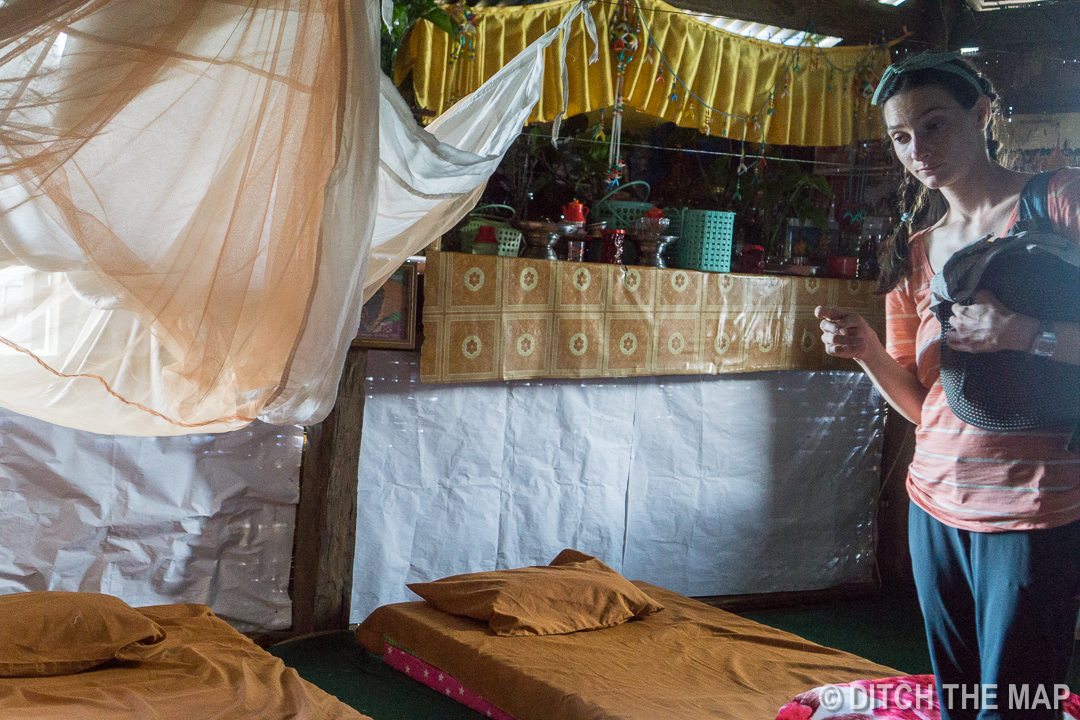
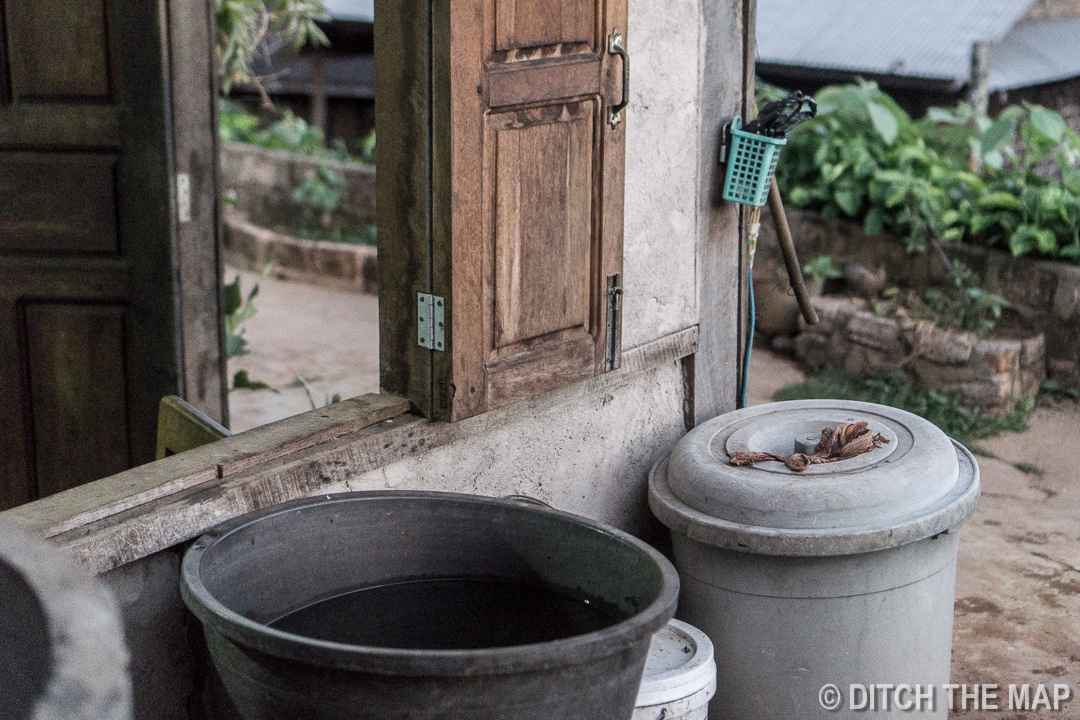
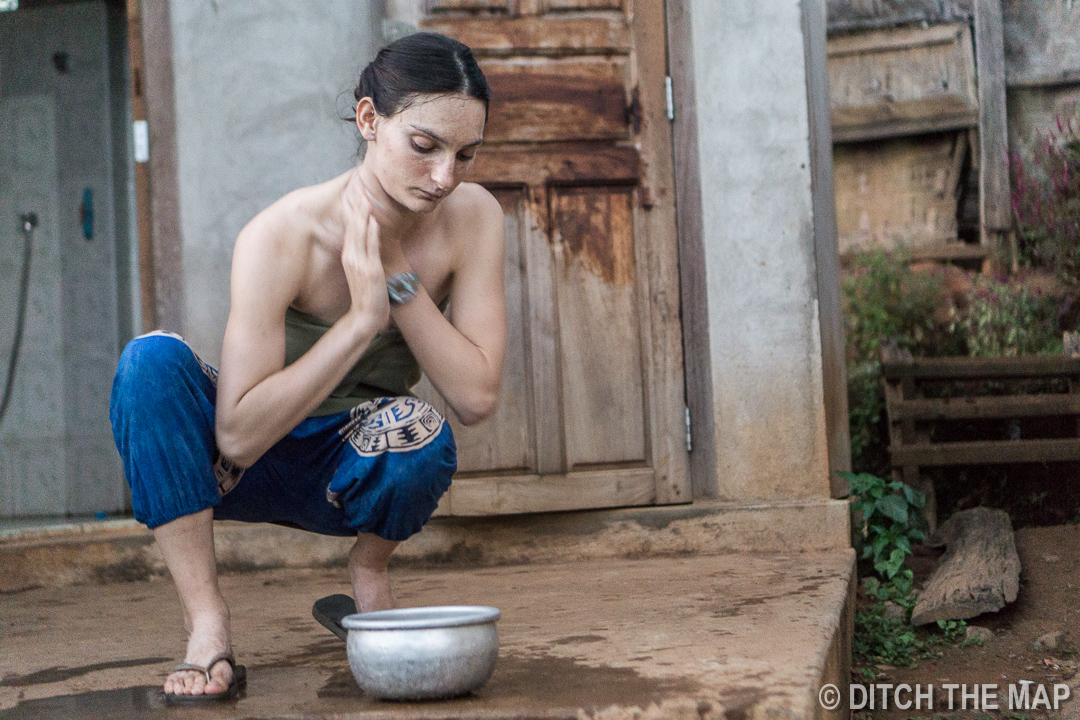
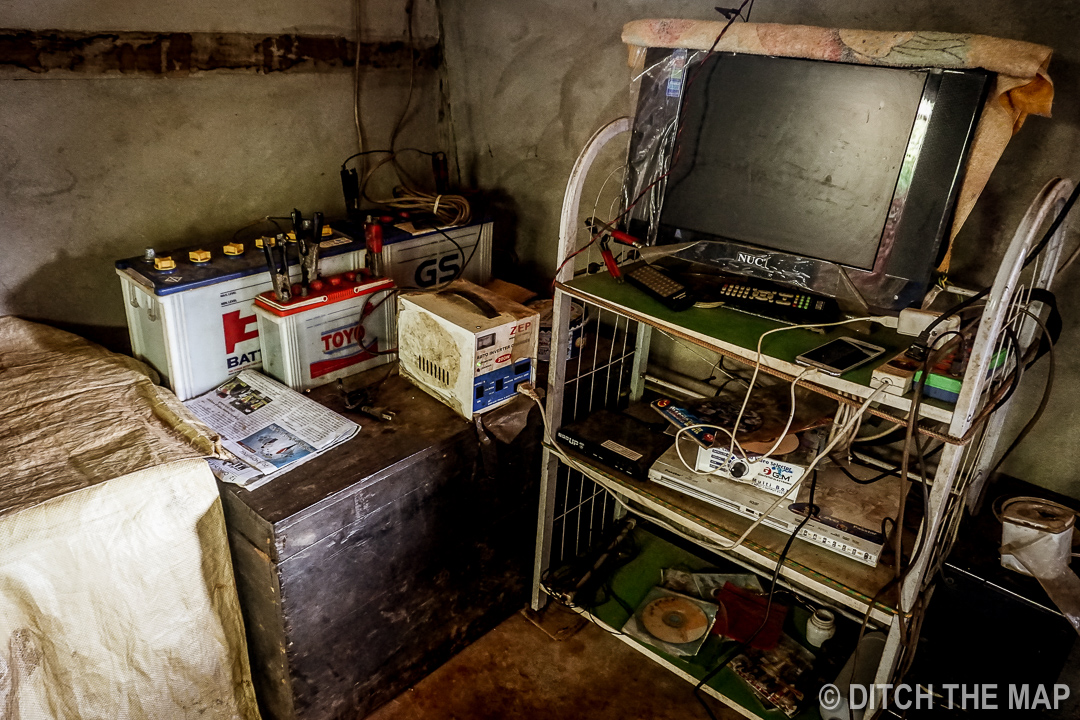
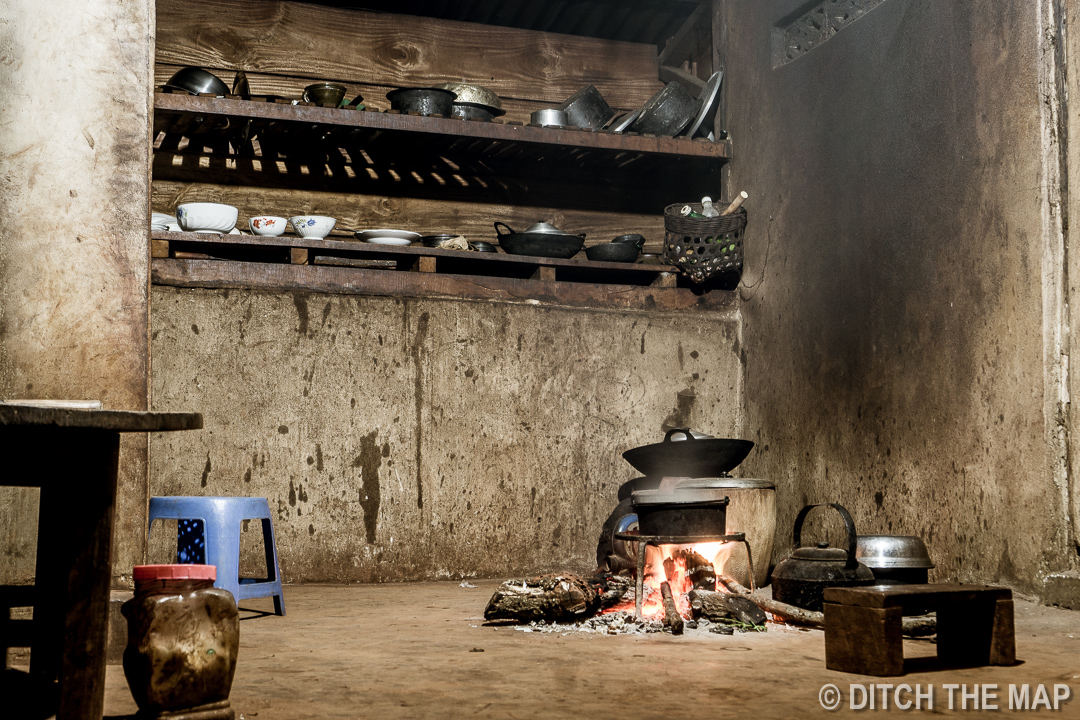
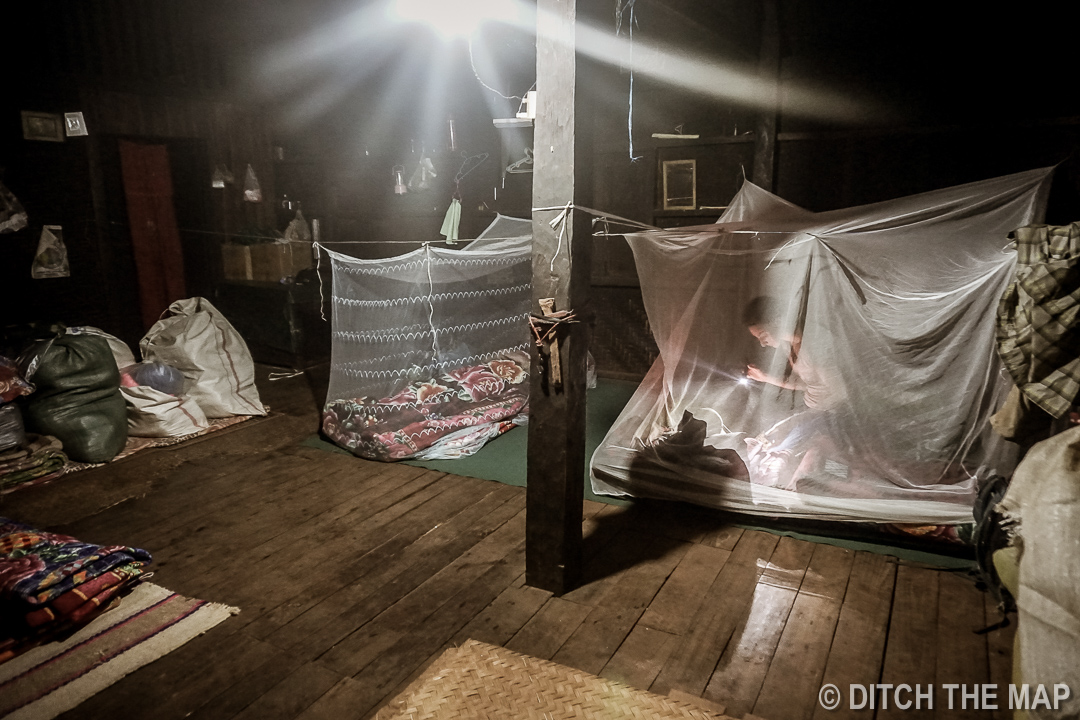
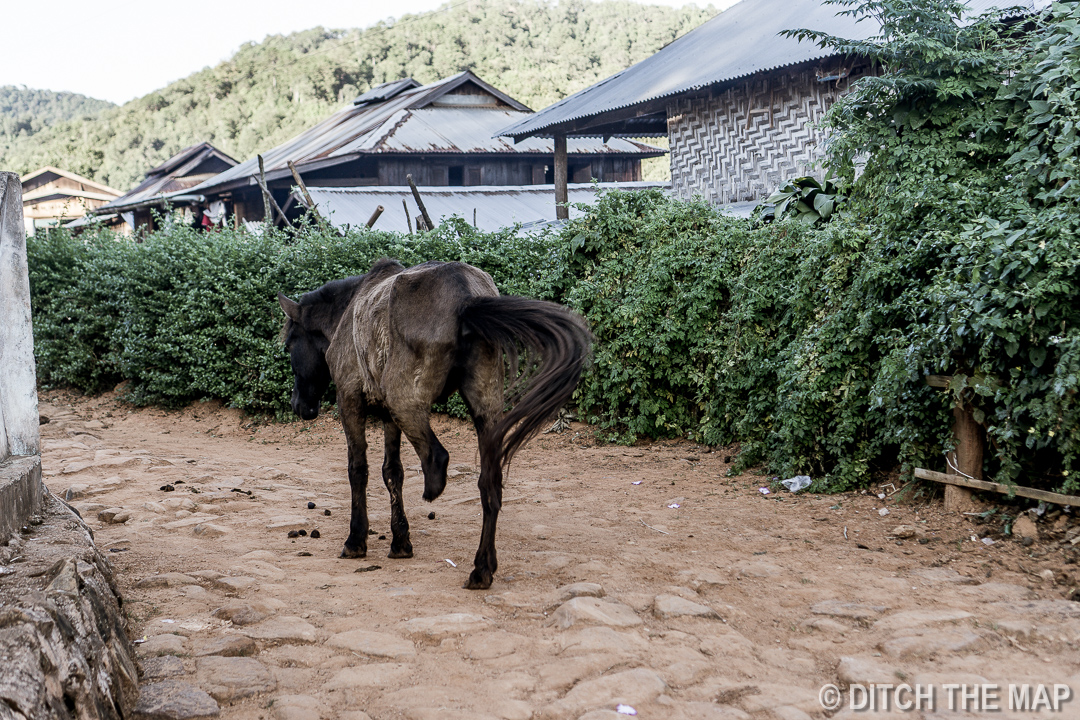
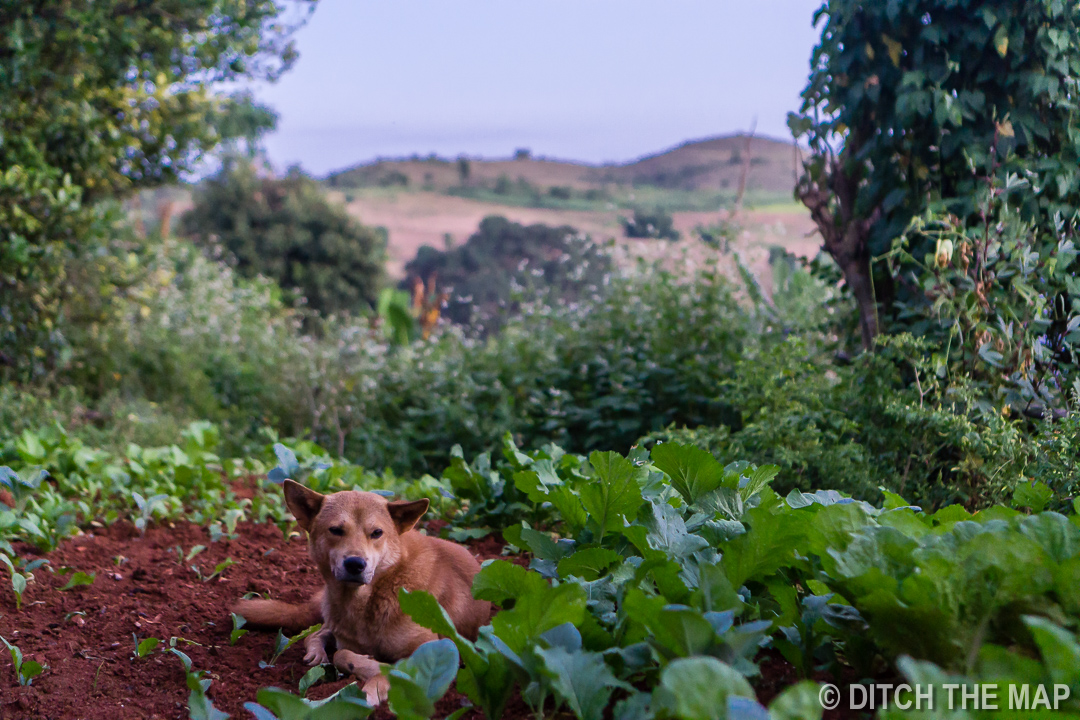
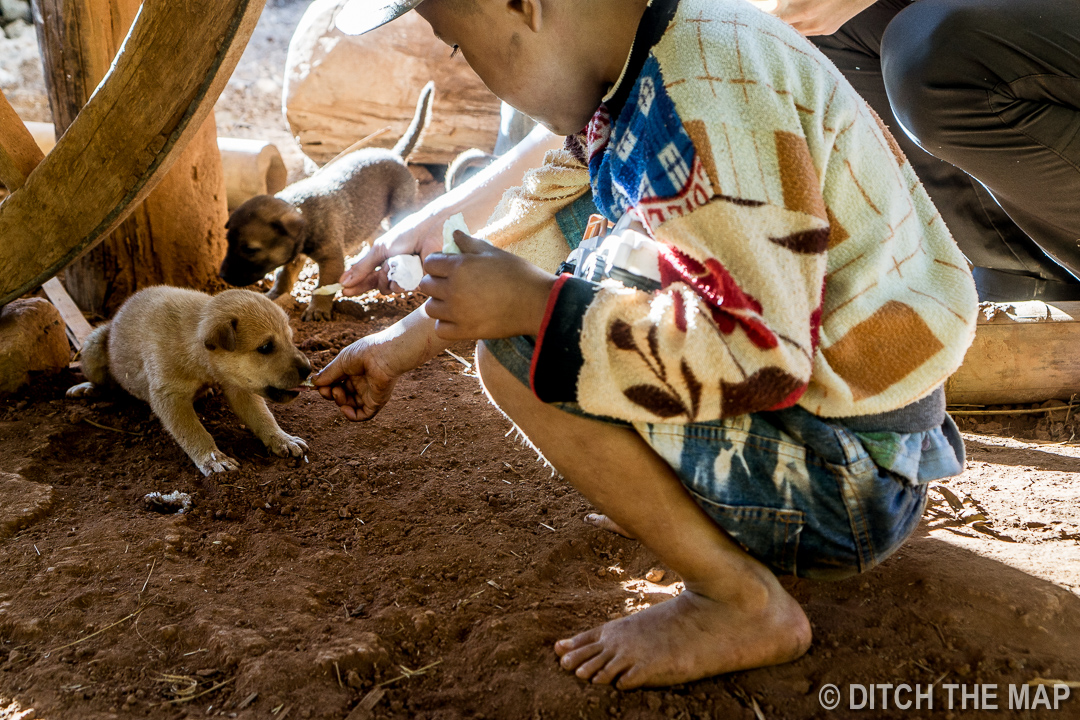
The third day we hiked 15km again. The path was so overgrown that our guide needed to backtrack and get help from a local villager. We ended up getting lost for an hour, and probably adding another km or two to our day’s hike. We’ll be moving pretty fast over the next 3 days.

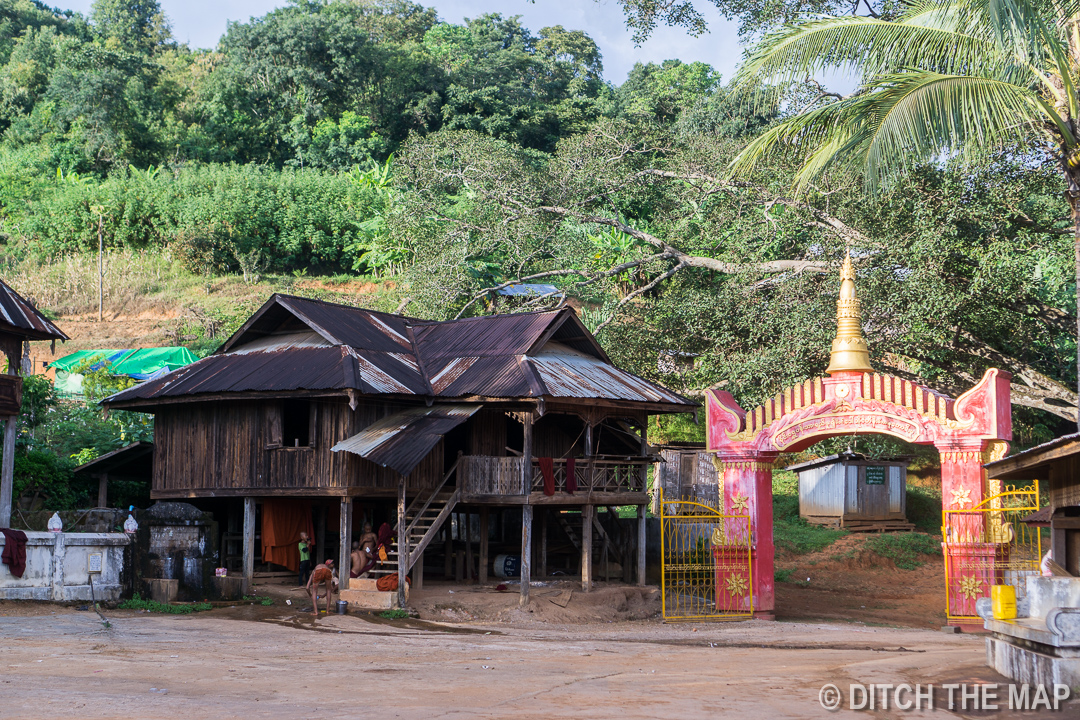
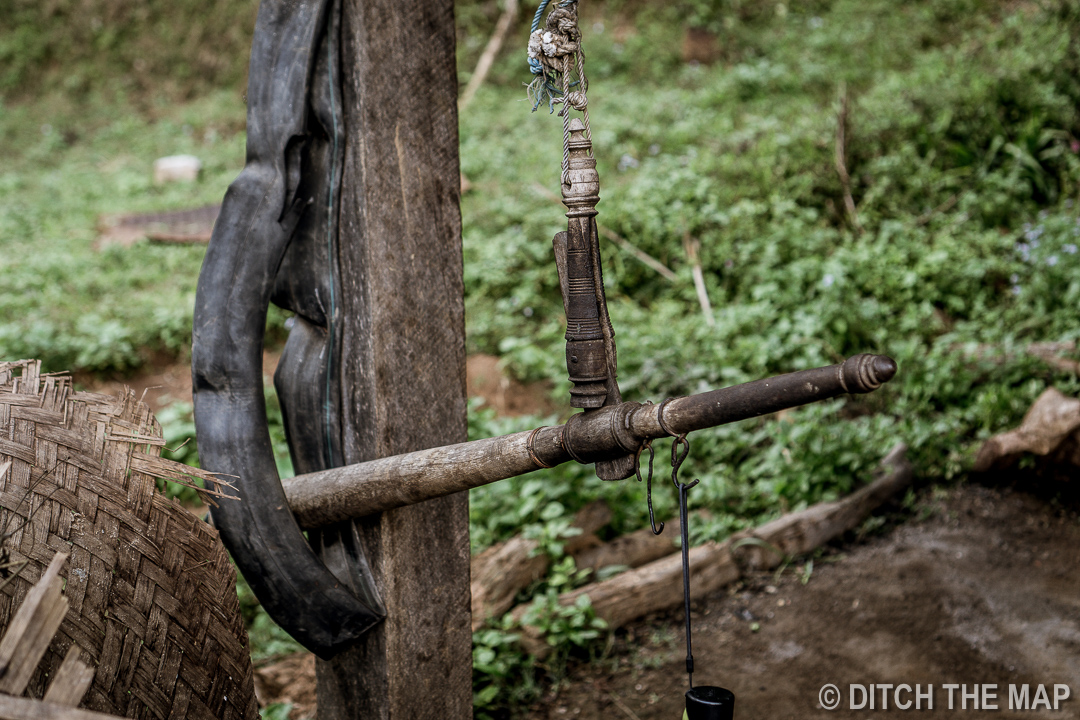
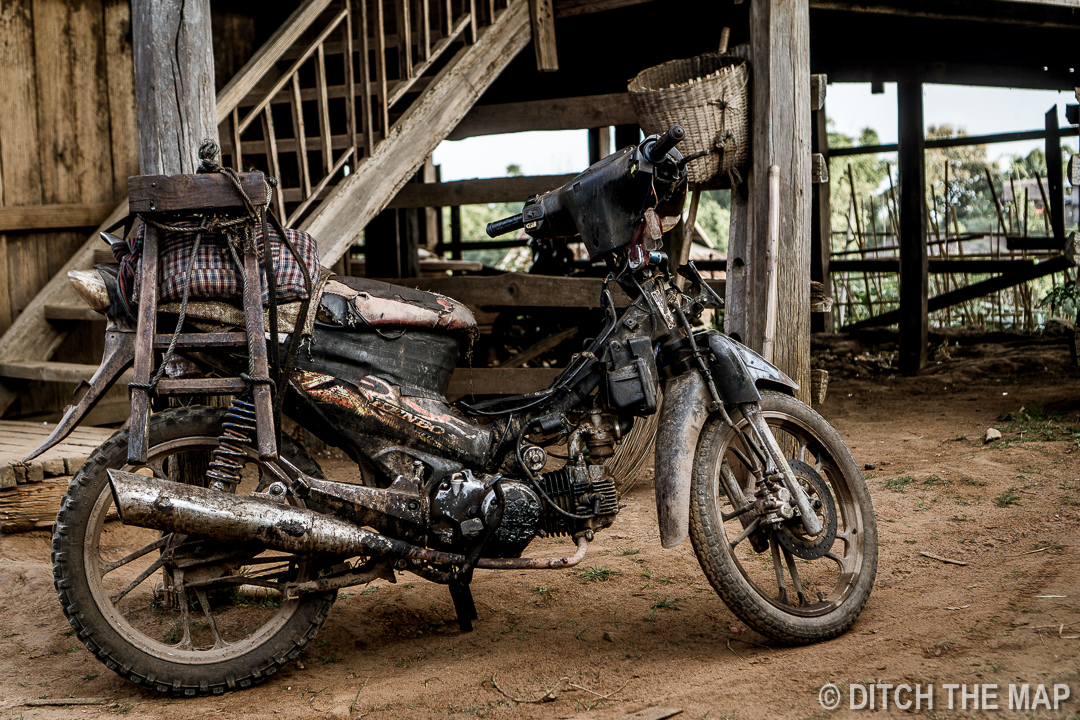

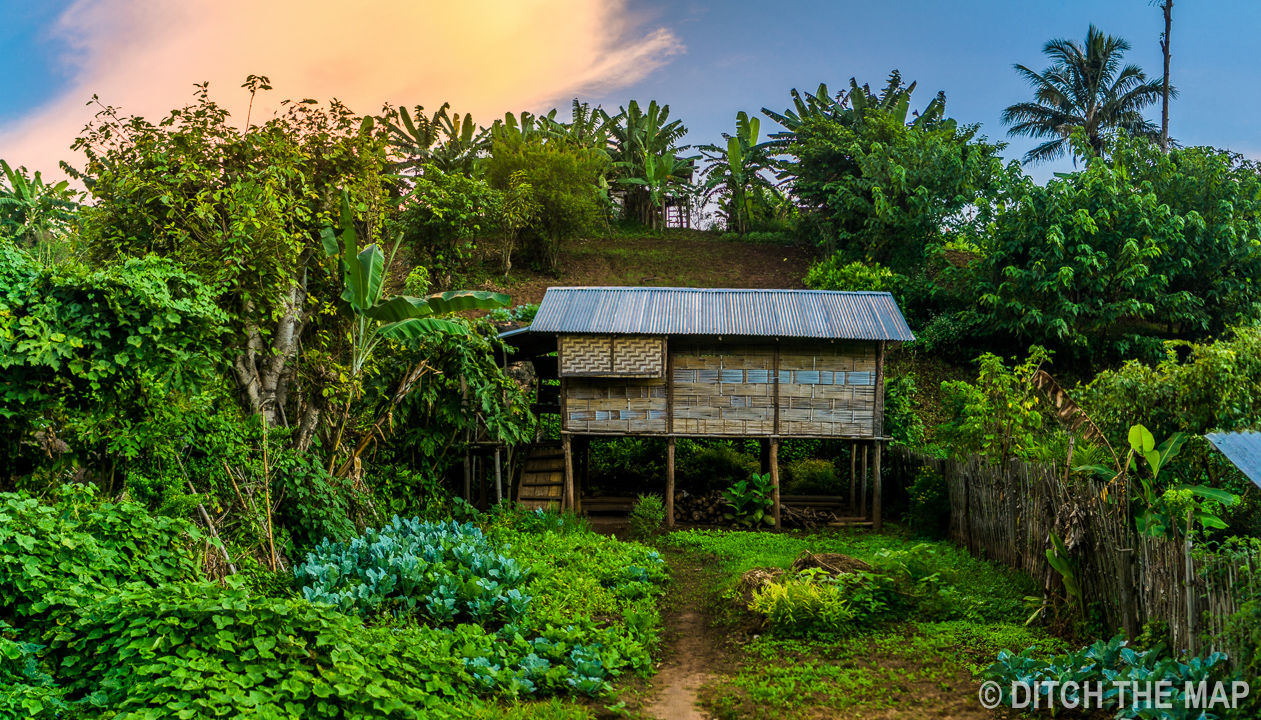
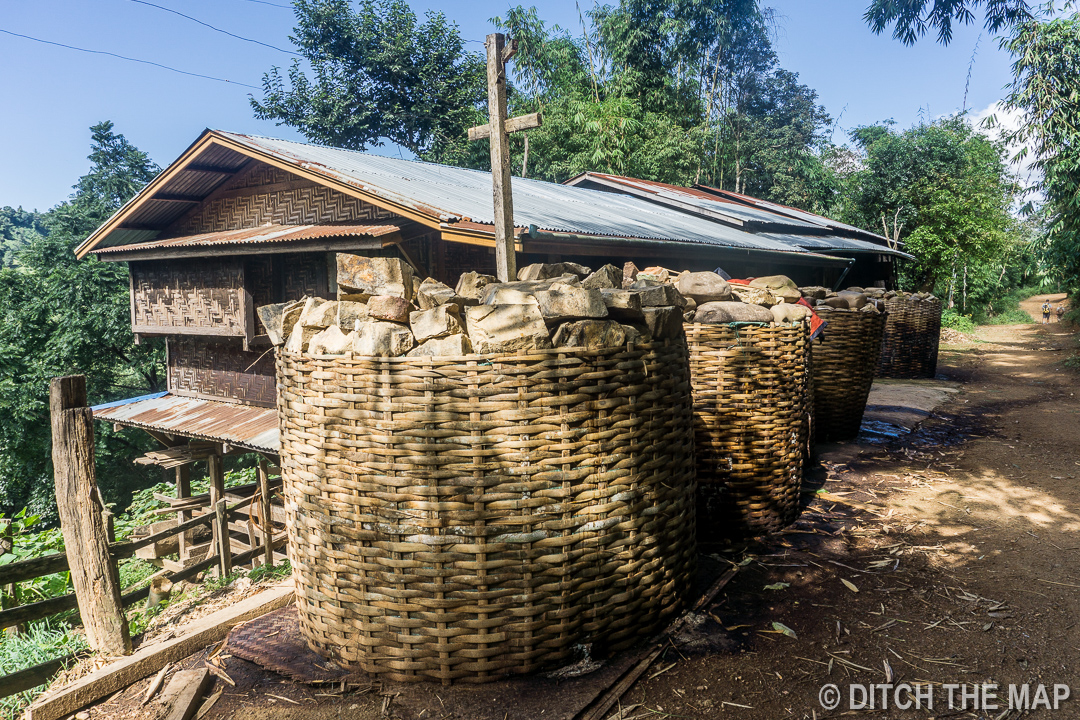
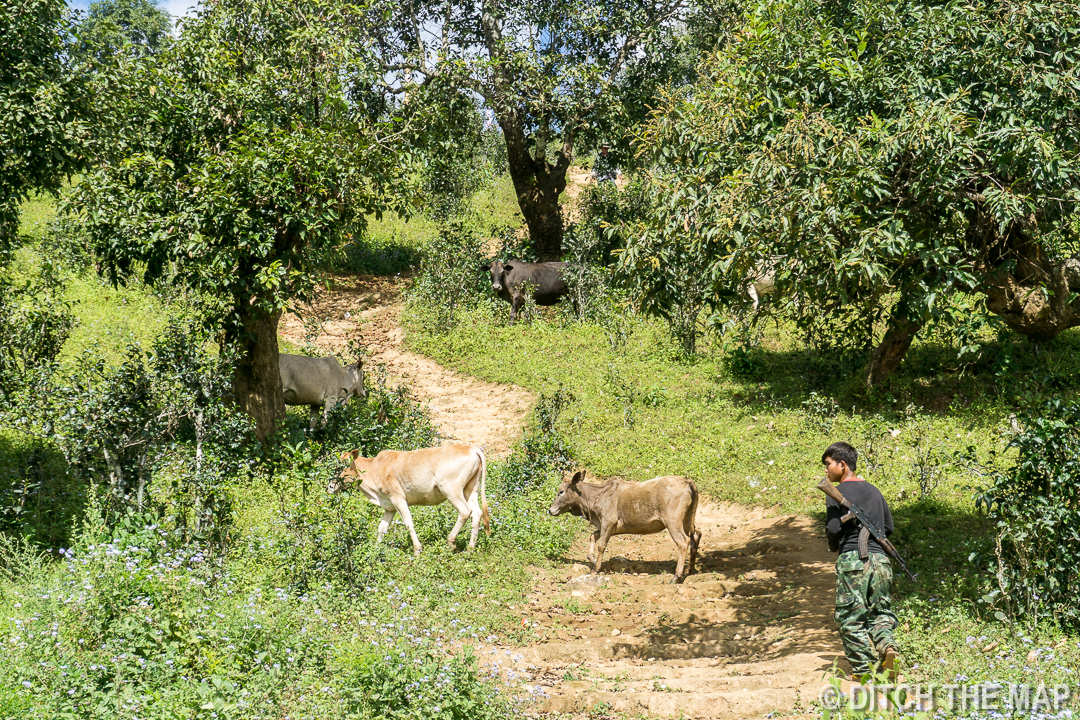
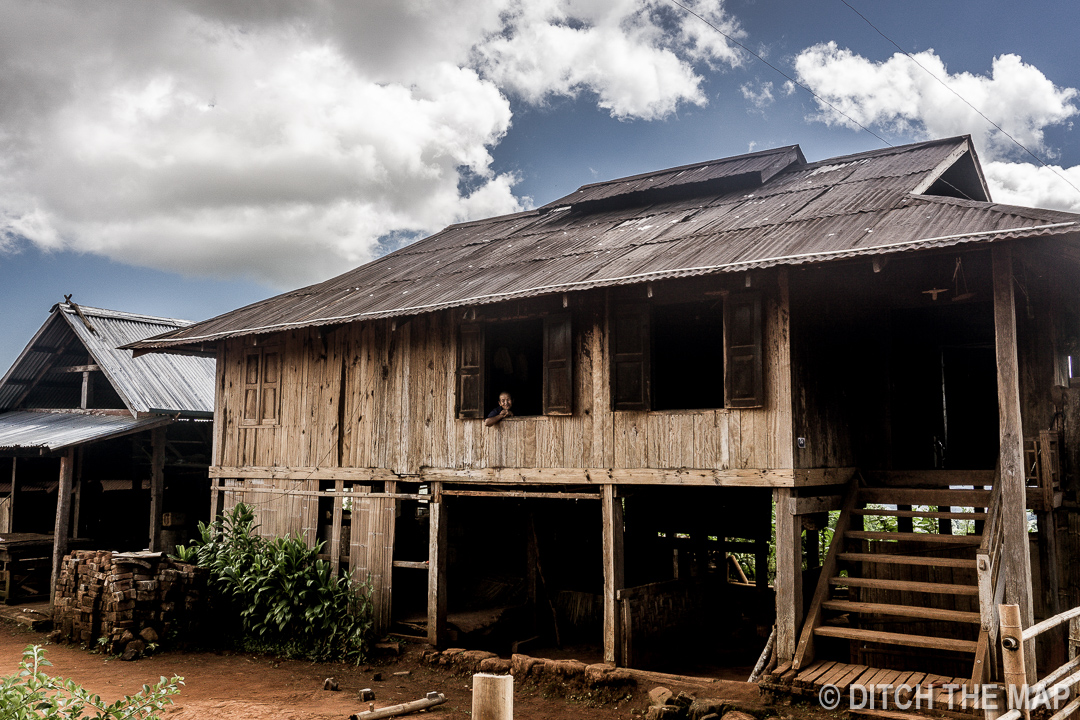

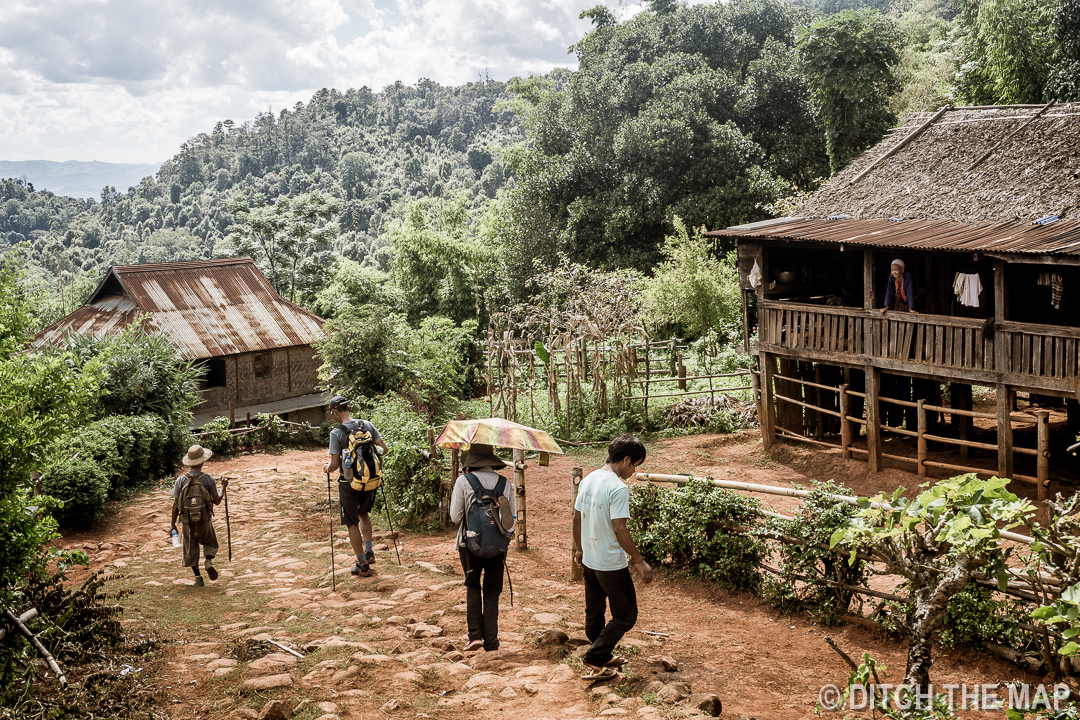
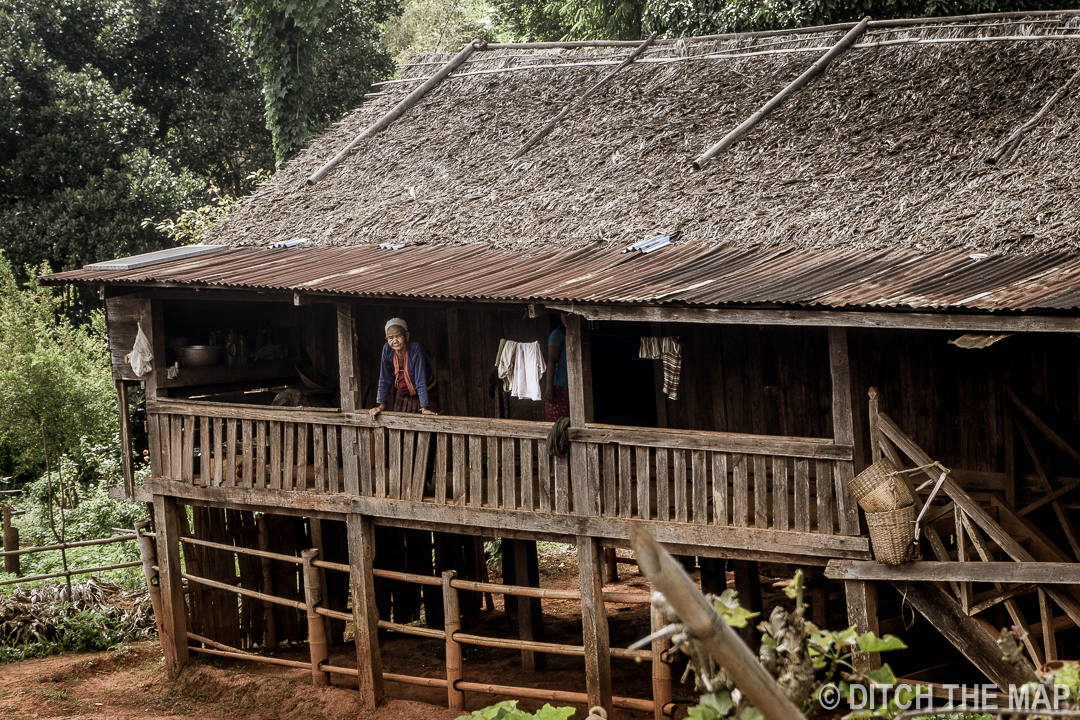
Now we are in Hsipaw. In 24 hours we’ll be in Yangon (via overnight bus). In 48 hours we’ll be in Bangkok (via international flight). In 72 hours we’ll be in Chiang Mai (via overnight bus). Then for 5 nights we’ll be enjoying our own condo, which has a sauna, swimming pool, and weight room. We’ll be staying 5km outside of Old Town, away from the noise, but tucked away with a mountain view. Afterwards we’ll be spending 5 nights in Pai for a yoga retreat.
A good overview of our hike can be found in this blog:
